How Fast Can An Eagle Fly? 5 Fastest Eagle Flight Speed
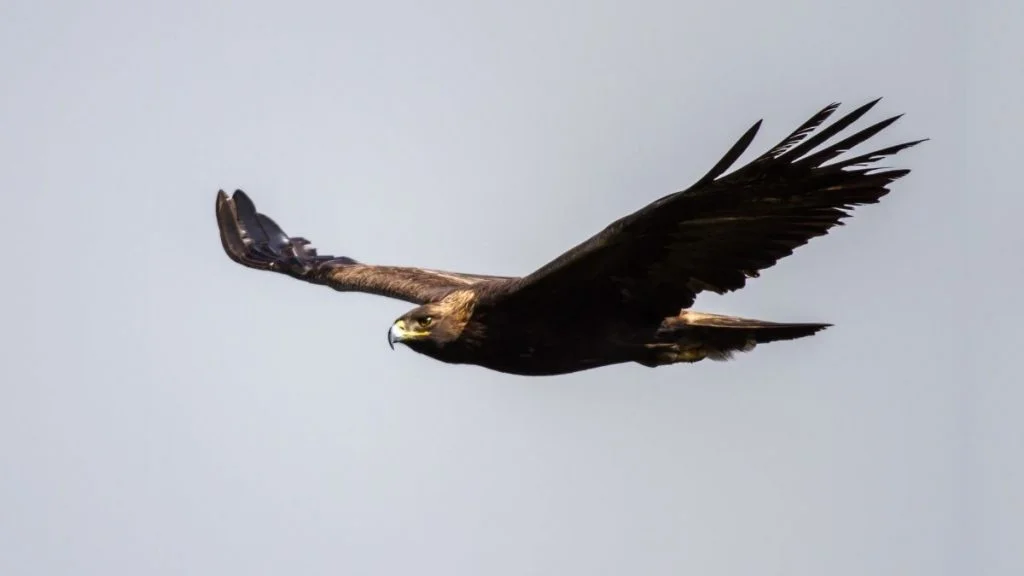
Eagles are popular arboreal carnivores compared to other bird species and can be found anywhere in the world.
Because of their unique characteristics, many countries have recognized them as symbols of strength, unity, and pride.
Eagles are also renowned for their flight speed. While they are swift birds, they are not the fastest birds in the world, but they top the ranks as one of the fastest.
But how fast can an eagle fly? Read on to discover the impressive flight speeds of some of the fastest eagles species and some interesting facts about them.

How Fast Can an Eagle Fly?
There are at least 60 species of eagles currently, with the majority ranging in Africa, Asia , and South America.
Eagles are fascinating animals and great hunters with a flight speed of about 60 to 150 mph. With their fast flight, sharp talons, and strong feet, they can grab unsuspecting prey off the ground and fly for over 50 miles, still holding onto their prey.
How High Can an Eagle Fly?
Eagles fly high above the ground; their altitudes depend on the species, wind currents, orographic updrafts, and thermal updrafts.
Some people believe that eagles can fly higher than planes, but that is wrong.
The bald eagle has proven to be the highest-flying eagle species in the world, reaching a height of 20,000 feet above sea level.
Planes fly at least 36,000 feet above the ground, and except for the peregrine falcon and Ruppel’s griffon vulture, no animal has been able to beat that record.
Top 5 Fastest Eagle Flight Speeds
1. golden eagle.
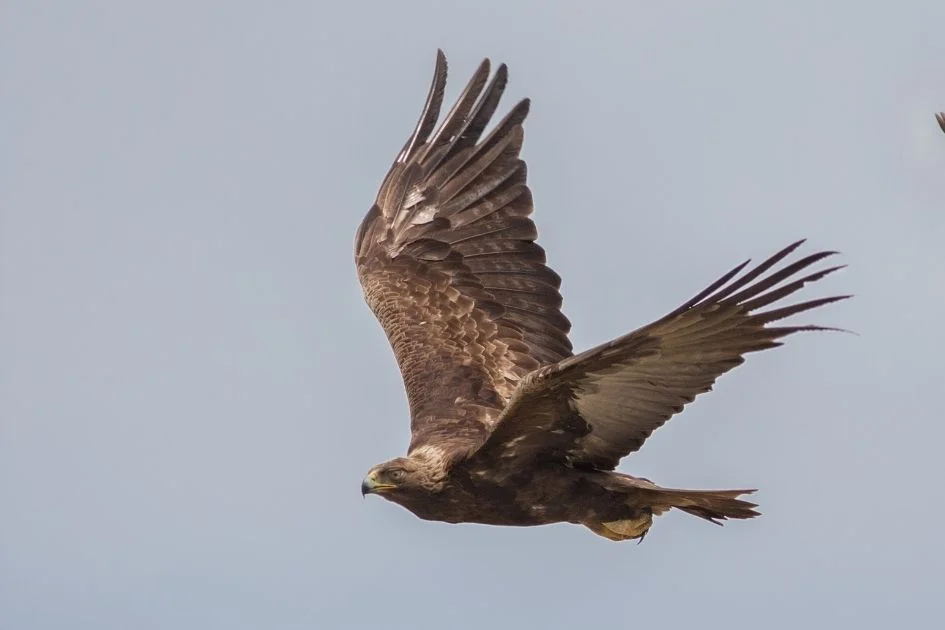
- Flight speed: 150 mph (avg.)
- Scientific name: Aquila chrysaetos
- Size: Length: 66 – 100 cm; Mass: 3.6 – 6.7 kg (Female), 2.8 – 4.6 kg (Male)
- Where found: North America
The Golden eagle is undoubtedly the fastest eagle in the world and the second-fastest bird, with a record flight speed of 150 mph and can even go faster.
They hunt by diving into their prey and attacking them swiftly. Their speed is their greatest advantage when it comes to hunting and survival.
2. Crowned Eagle
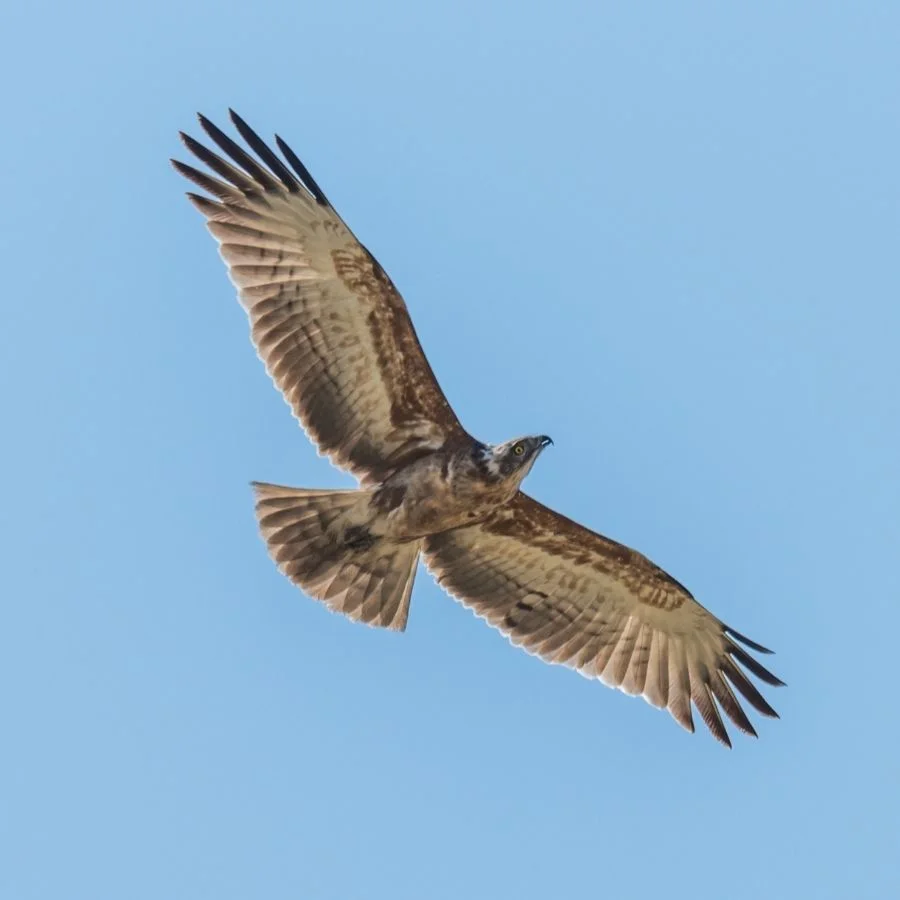
- Flight speed: 100 mph (avg.)
- Scientific name: Stephanoaetus coronatus
- Size: Length: 80 – 99 cm; Mass: 3.2 – 4.7 kg (Female), 2.6 – 4.1 kg (Male)
- Where found: Africa
Crowned eagles are the second-fastest and can fly as fast as 100 mph. They are also the biggest raptor in sub-Saharan Africa.
It has a reputation for feeding on sloths and monkeys and is often an excellent hunter.
The female crowned eagles, which are larger, go out to hunt and take on bigger prey, while the males take on smaller prey whenever they hunt.
3. Bald Eagle
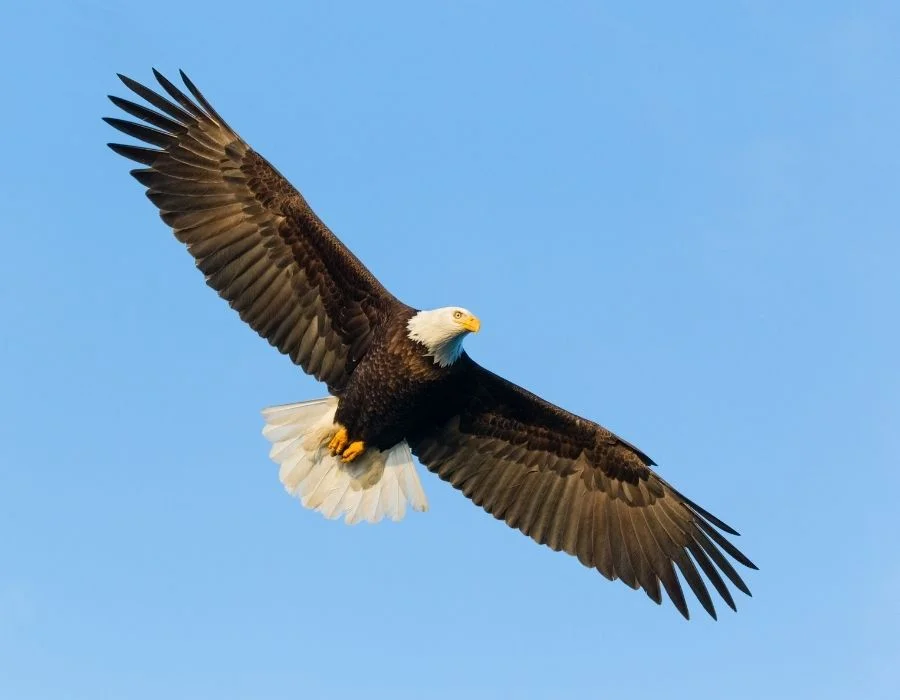
- Flight speed: 99 mph (avg.)
- Scientific name: Haliaeetus leucocephalus
- Size: Length: 70 – 102 cm; Mass: 3.8 – 7.9 kg (Female), 3 – 6.3 kg (Male)
- Where found: North America
Bald eagles aren’t bald in the sense that you think of it. The old English word “balde,” meaning “white,” is where their name comes from because of the color of their head and tails.
Bald eagles can fly as fast as 99 mph, and thus, they are very skilled hunters.
However, despite their excellent hunting skills, these eagles do not often hunt their food. They prefer to steal food from other animals or scavenge for food instead.
4. Harpy Eagle
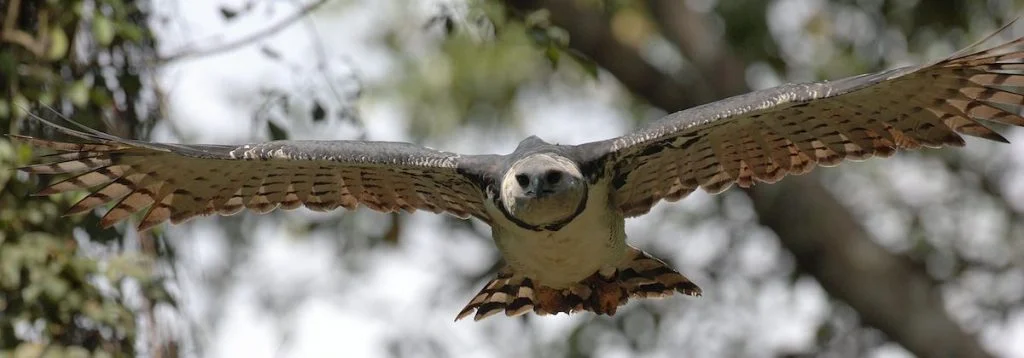
- Flight speed: 50 mph (avg.)
- Scientific name: Harpia harpyja
- Size: Length: 99 cm; Mass: 6 – 9 kg (Female), 4 – 5 kg (Male)
- Where found: South America, most especially the Amazonian forest, Brazil.
The harpy eagle is among the world’s largest eagles and can fly up to 50 mph without stopping. They are not just fast but are also skillful when it comes to hunting.
Their feet are strong enough to grab unsuspecting prey, while their wings are wide enough to keep them soaring high above the ground to make it back to their nest, usually on cliffs and high mountains.
5. Wedge-tailed Eagle
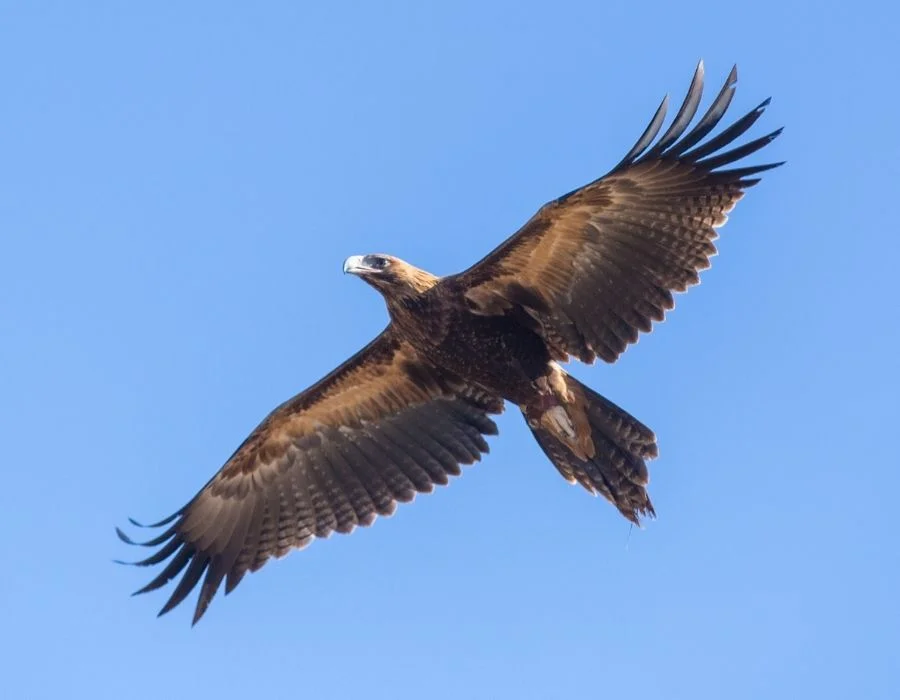
- Scientific name: Aquila audax
- Size: Length: 100 – 120 cm; Mass: 4.2 to 5.3 kg (Female); 3.2 – 4 kg (Male)
- Where found: Australia
The wedge-tailed eagle flies just as fast as the harpy eagle. With an average speed of 50 mph, they make excellent hunters too.
These birds are the biggest and rarest eagle species in Australia. However, animal specialists and researchers do not have enough information about this eagle because they are not common.
Interesting Facts About Eagles
They have good eyesight.
If you’re reading this, you’ve probably heard of the term “eagle’s eye.” Humans coined that term because of how good their eyes are.
These bird species can see eight times better than human beings. Eagles see as good as owls during the day, but their eyesight starts to weaken once the sun sets.
They can fly in the rain and during a storm
The eagle can fly in the rain, but there’s a twist; they can get blown off by the wind if they’re not careful.
Flying for hours under the rain requires skill and strength, which these predatory birds have. During storms, they can also fly to safety for hours amid the chaos.
They have a firm grip
If you think humans have a firm grip on things when they hold them, wait until you see an eagle grip something. Their legs are strong and tend to use all their strength to grip and hold onto things.
For instance, when they hunt, they wait around for the animal to be less alert, and upon sensing an opening, they swoop down and grip the animal alive.
While in the air, nothing would make them ever lose their grip and drop that animal, no matter how much they struggle.
They can carry weights up to 7kg
Eagles are known to hunt animals that are quite bigger than them. They prey on animals like small antelopes, monkeys, sloths, foxes, and even coyotes . Most of these animals weigh at least 7kg.
However, eagles carry them with their feet and fly for miles until they reach their nests. This feat is possible because the average eagle’s feet are powerful and can carry weights much heavier than they are.
Related Questions
How fast does an eagle dive.
Eagles are fast divers. They dive at an average speed of 200 mph, which is second only to the peregrine falcon’s speed. It is no wonder why they’re very skilled hunters.
Typically, they soar above ground level and only dive when they find an animal they can prey on.
Which is faster, eagle or hawk?
Eagles and hawks are similar in appearance, traits, and even abilities. They share similar sizes and wingspans, prey on almost the same types of animals, and fly very fast.
However, eagles fly faster than hawks. On average, hawks can only achieve a flight speed of 120 mph, while the former can reach 150 mph.
Which is faster, falcon or eagle?
Falcons are naturally faster than eagles. Falcons are the world’s fastest birds and have a record of flying speeds of 240 mph, while the eagle’s flight speed maxes around 200 mph.
What is the fastest flying bird?
Peregrine falcons are the world’s fastest flying birds. They are known to have a record of flying as fast as 240 mph.
The peregrine falcon is carnivorous and is one of the big birds. It ranges in North America, Europe, Asia, and Australia.
With a speed of over 150 mph, eagles are among the fastest flying birds in the world.
Aside from their incredible speed, they are also excellent hunters and can hold prey three times their size, thanks to their sturdy and powerful feet.
All these attributes make the eagle a fascinating bird to study.
Featured Image Credit: H_Yasui / Getty Images
Related Posts:
What is a group of eagles called (collective nouns), how much weight can an eagle carry (lifting capacity).
- 35 Sneaky Animals That Are Stealthy (With Pictures)
- How Big Are Eagles? (Eagle Size, Wingspan & Weight)
- 20 Animals In Lion King Movie You Should Know In Real Life
15 Harpy Eagle Facts (Most Powerful Eagle In The World)
About the author.
Jake Wilson
Related posts.
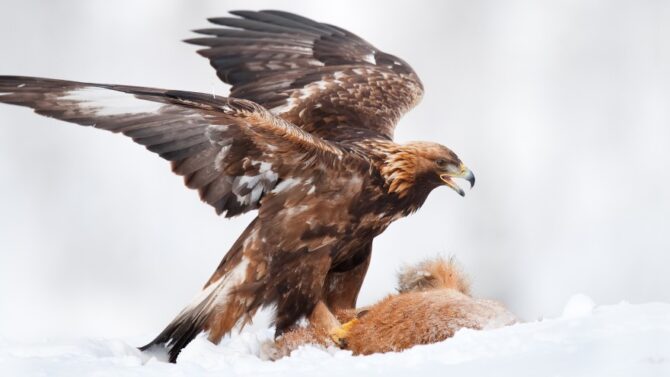
What Do Eagles Eat? (Eagle Diet, Hunting Habit, Food Chain)
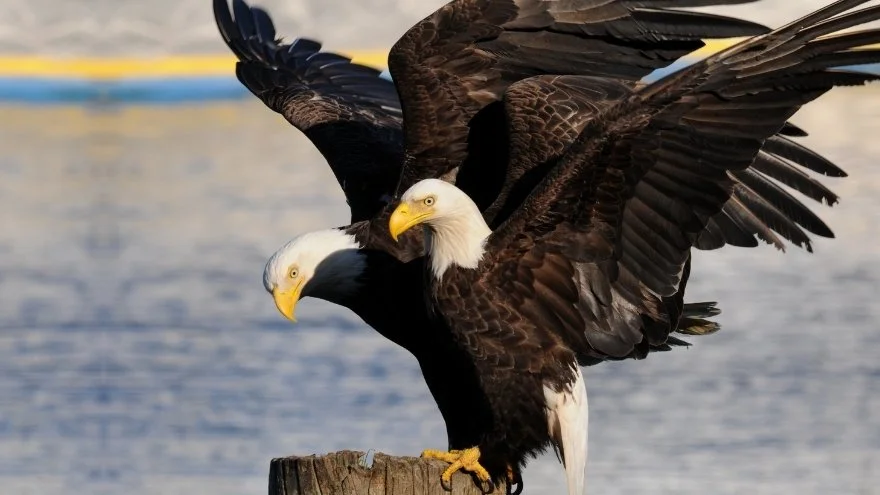
How Do Eagles Mate? (Eagle Reproduction & Life Cycle)
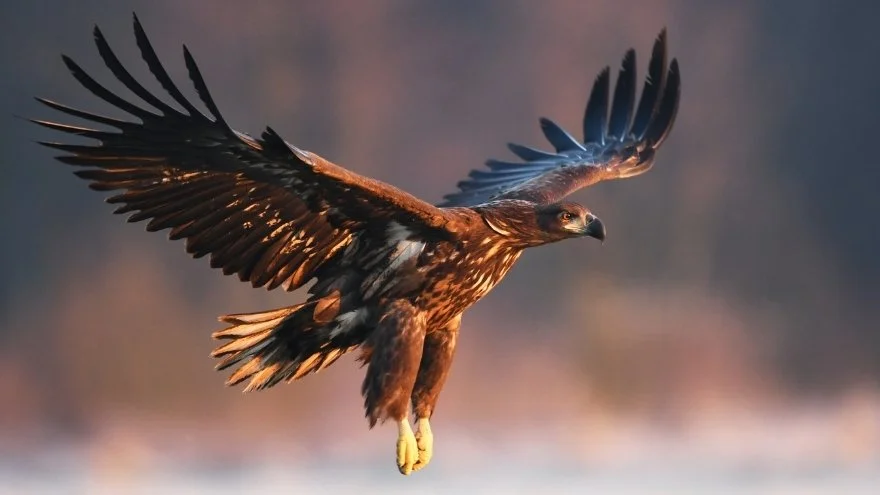
How Big Are Eagles? (Eagle Size, Wingspan & Weight)


Top 5 Fastest Eagle Species in the World
Updated on: May 18, 2023

Henry Sinclair
May 18, 2023 / Reading time: 5 minutes

Sarah Kirby
We adhere to editorial integrity are independent and thus not for sale. The article may contain references to products of our partners. Here's an explanation of how we make money .
Why you can trust us
Wild Explained was founded in 2021 and has a long track record of helping people make smart decisions. We have built this reputation for many years by helping our readers with everyday questions and decisions. We have helped thousands of readers find answers.
Wild Explained follows an established editorial policy . Therefore, you can assume that your interests are our top priority. Our editorial team is composed of qualified professional editors and our articles are edited by subject matter experts who verify that our publications, are objective, independent and trustworthy.
Our content deals with topics that are particularly relevant to you as a recipient - we are always on the lookout for the best comparisons, tips and advice for you.
Editorial integrity
Wild Explained operates according to an established editorial policy . Therefore, you can be sure that your interests are our top priority. The authors of Wild Explained research independent content to help you with everyday problems and make purchasing decisions easier.
Our principles
Your trust is important to us. That is why we work independently. We want to provide our readers with objective information that keeps them fully informed. Therefore, we have set editorial standards based on our experience to ensure our desired quality. Editorial content is vetted by our journalists and editors to ensure our independence. We draw a clear line between our advertisers and editorial staff. Therefore, our specialist editorial team does not receive any direct remuneration from advertisers on our pages.
Editorial independence
You as a reader are the focus of our editorial work. The best advice for you - that is our greatest goal. We want to help you solve everyday problems and make the right decisions. To ensure that our editorial standards are not influenced by advertisers, we have established clear rules. Our authors do not receive any direct remuneration from the advertisers on our pages. You can therefore rely on the independence of our editorial team.
How we earn money
How can we earn money and stay independent, you ask? We'll show you. Our editors and experts have years of experience in researching and writing reader-oriented content. Our primary goal is to provide you, our reader, with added value and to assist you with your everyday questions and purchasing decisions. You are wondering how we make money and stay independent. We have the answers. Our experts, journalists and editors have been helping our readers with everyday questions and decisions for over many years. We constantly strive to provide our readers and consumers with the expert advice and tools they need to succeed throughout their life journey.
Wild Explained follows a strict editorial policy , so you can trust that our content is honest and independent. Our editors, journalists and reporters create independent and accurate content to help you make the right decisions. The content created by our editorial team is therefore objective, factual and not influenced by our advertisers.
We make it transparent how we can offer you high-quality content, competitive prices and useful tools by explaining how each comparison came about. This gives you the best possible assessment of the criteria used to compile the comparisons and what to look out for when reading them. Our comparisons are created independently of paid advertising.
Wild Explained is an independent, advertising-financed publisher and comparison service. We compare different products with each other based on various independent criteria.
If you click on one of these products and then buy something, for example, we may receive a commission from the respective provider. However, this does not make the product more expensive for you. We also do not receive any personal data from you, as we do not track you at all via cookies. The commission allows us to continue to offer our platform free of charge without having to compromise our independence.
Whether we get money or not has no influence on the order of the products in our comparisons, because we want to offer you the best possible content. Independent and always up to date. Although we strive to provide a wide range of offers, sometimes our products do not contain all information about all products or services available on the market. However, we do our best to improve our content for you every day.
Table of Contents
Every nature enthusiast has heard or read about the majestic eagles. But have you ever wondered which is the fastest eagle on our planet?
By reaching a maximum speed of 199 mph, the golden eagle is the world’s fastest eagle. Golden eagles are ranked the third-fastest bird globally after peregrine and saker falcons.
H owever, that’s not all. This article will go through the five fastest eagles and share some exciting facts about these fantastic flying predators!
Top 5 Fastest Eagle Species in the World
#5 bald eagles.

Weight: 6.6-14 lbs Wingspan: 5.9-7.5 ft. Top Speed: 100 mph Use of Speed: Soaring, Hunting, Scouting
Bald eagles, contrary to their names, are not bald. Instead, they have beautiful white features around their heads, making them quite striking.
Their bodies are covered in brown feathers befitting their mighty looks.
Bald eagles can reach up to about 43 inches (110 cm) in length and have a wingspan of up to about 7.5 feet (2.2 meters). Interestingly, these eagle species can live up to the fantastic thirty years.
The maximum speed of the bald eagle is up to 100 mph but is reachable only when it springs down towards its prey. On a typical day, when they fly flat, the average speed of bald eagles is about 28 to 31 mph.
As the USA symbols, you can assume that the bald eagles’ primary habitat is in North America.
They are types of eagles that primarily hunt fish. However, they will feed on other birds and small mammals when the opportunity arises.
When they are in hunting mode, golden eagles soar from a high range, utilizing their impressive eyesight to spot potential prey. Once the target is located, they swoop down on it with high speed inflicting the grip of death with their powerful talons.
The squeeze of the golden eagle’s talons is around 750 psi, 100 psi higher than the lion’s bite force!
#4 Crowned Eagles

Weight: 5.6-10 lbs Wingspan: 5-5.9 ft. Top Speed: 100 mph Use of Speed: Soaring, Hunting
Crowned eagles are natives of Sub-Saharan Africa. Their preferred habitat is in the woodlands, where they can find their preferred prey.
Arguably it is among the most beautiful eagles on the planet. They have a dark brown feathering over the head, forming a crown-like image, hence the name.
In addition, crowned eagles have creamy feathers on their chest, red, and a mix of dark brown to black feathers, forming a beautiful pattern. The same goes over their wings, too, dark brown on top and reddish on the lower part.
Crowned eagles can reach an incredible 100 mph when swooping towards their prey from the sky. Their flight speed averages 19 to 31 mph when they soar, depending on the currents and the winds.
An exciting but gruesome fact about crowned eagles is that they are extremely dangerous and may prey on humans in rare cases. It is not often, but there have been cases where these eagles have been spotted attacking children.
#3 Steller’s Sea Eagles

Weight: 11-20 lbs Wingspan: 6.4-8.2 ft. Top Speed: 140 mph Use of Speed: Hunting, Soaring
The Steller’s sea eagle is one of the most easily recognizable eagles. It has dark brown plumage over almost all of its body, with white feathers only on the forehead, upper wings, and tail.
The beak and feet are bright yellows, and you cannot overlook their enormous size! They are the heaviest eagles on the planet!
Steller’s sea eagles fly at an average speed of about 28 mph when they soar in the sky, searching for prey. Once they spot some, they dive for it and reach up to 140 mph!
Native to the North-East Asian coast, Steller’s sea eagles tend to prey on fish like salmon or trout but will not be picky if they can quickly snatch up a fast dinner.
Instead, it would eat anything, be it dead or alive, as long as it is rich in proteins, just like a natural bodybuilder.
Interestingly, Steller’s sea eagles have binocular vision. That means that the bird’s eyes are set on the front of its head.
This way, it will focus on its target and almost never miss!
Read Also: Fastest Running Birds
#2 Martial Eagles

Weight: 7-14 lbs Wingspan: 6.1-6.5 ft. Top Speed: 143 mph Use of Speed: Hunting, Soaring, Scouting
Martial eagles are the largest eagle species in Africa. They have dark brown to sometimes greyish feathering over their heads in addition to white color on their torso.
Labeled as the biggest in the oldest continent, eagles can reach over 30 inches.
Martial eagles are the second-fastest eagles, with a maximum flight speed of 143 mph. The average flight rate when they soar over the hot air currents of Africa is about 31 mph, but they can fly as fast as 37 mph.
Like every eagle species, they do not fly nonstop at 143 mph speed; but only when swooping down on running prey like a rabbit or other small animal.
These birds of prey carry the Roman God of War name and can easily break a human arm.
An interesting fact about martial eagles is that they are known as ‘the leopard of the sky.’ The reason behind the nickname comes from the fact that martial eagles are considered one of the deadliest and most ferocious avian predators on the planet.
Related: How Dangerous Are Eagles to Humans?
#1 Golden Eagles

Weight: 6.6-15 lbs Wingspan: 5.9-7.7 ft. Top Speed: 199 mph Use of Speed: Soaring, Hunting
T he golden eagle is a large avian predator found in the Northern Hemisphere. It has a huge wingspan and is the fastest eagle worldwide. Its body reaches about 29 to 35 inches (75 to 90 cm) and, for the larger females, up to 39 inches (100 cm).
If you want to identify this majestic bird, look for dark brown feathers with a golden trait around its head and shoulders.
The golden eagle reaches its maximum flight speed (190 mph) mainly when hunting and swooping toward the ground to prey on rabbits and other animals. When it relies on the air currents, it usually keeps a pace of about 31 mph.
An interesting fact about these raptors is that they have big nests reaching up to a few meters. On top of that, both parents share the duty to feed the young birds.
The male usually hunts the prey, and the female eagle feeds the younglings.
Bottom Line:
Assuming you have read everything, you know about the top 5 fastest eagles on Earth. How do they look, their basic description, and their maximum flight speed?
Considering all the information from above, the fastest eagle species on the planet is the golden eagle. It can reach a flight speed of up to an astonishing 199 mph!
Thank you for reading. If you liked this post, here’s another popular eagle article: Strongest Eagles on the Planet.
Further Reading:
https://en.wikipedia.org/wiki/Bald_eagle
https://animals.sandiegozoo.org/animals/crowned-eagle
https://www.nationalgeographic.com/animals/birds/facts/stellers-eagle
https://www.krugerpark.co.za/africa_martial_eagle.html
https://www.eagles.org/what-we-do/educate/learn-about-eagles/golden-eagle-behavior/
Related articles
- Dove plague in South America endangers crops and how Argentina is already taking action against it
- 8 Most Fearless Animals in the World
- List of Animals With Scales (12 Examples With Pictures)
- What Eats Polar Bears? [TOP 4 Polar Bear Predators]
- 11 Animals With Whiskers You Need to Know
- Animals With Lungs and Gills (& One Superb Surprise)
- Unraveling 8 Most Curious Animals In The World
- 12 Most Sneaky and Stealthy Animals (Masters of Disguise)
- Distraction Masters: 10 Animals With Short Attention Spans
- Animals Without Eyelids: Meet 10 Creatures That Don’t Blink
- 8 Animals That Eat Bamboo (With Pictures)
- 8 Awesome Animals With Manes (+ Pictures)
- List of Most Clumsy Animals (6 Examples With Pictures)
- Do Bears Eat Dogs? Cracking the Code of the Food Chain
- 14 Animals That Hop (Jump Length & Pictures)
- 20 Cool Animals With Big Ears (Pictures & Fun Facts)
- Do Lions Eat Leopards? The Answer May Surprise You!
- Are Wolves Color Blind? What Colors Can Wolves See?
- Do Bears Live in the Jungle? The Unexpected Truth
- Do Otters Eat Fish? An Ultimate Guide to Their Fishy Diet
- Do Otters Eat Ducks? Otterly Surprising Eating Habits
- Are Kangaroos Smart? Decoding the Intelligence of Kangaroos
- Are Crocodiles Just Lizards in Disguise? The Truth!
- Do Lions Eat Grass? Big Cat’s Mysterious Diet Explored
- Can Otters Breathe Underwater? (The Truth Revealed)
- Do Hippos Eat Meat? Are Hippos Carnivores or Omnivores?
- Which Bird is a Mammal? (Meet the Unusual Kiwi Bird)
- Can Otters Live On Land? (The Surprising Truth)
- Can Bears Be Domesticated? Debunking the Myths
- Meet 8 Unique Animals With Long Faces (Pictures)
- 12 Cool Animals That Crawl (Crawl Speed & Pictures)
- What Eats Leopards (Top 5 Leopard Predators)
- Are Lions Smart? (Exploring the Intelligence of Lions)
- 11 Powerful Animals With No Natural Predators
- Are Capybaras Friendly or Dangerous? (Fun Read!)
- How Strong Are Tigers? (Tiger Strength Facts)
- Can Kangaroos Walk Backwards? (Myth or Fact?)
- What are Lions Afraid of? (Plus 3 Lion’s Weaknesses)
- What Eats Lions?! (List of Lion Predators)
- How Strong Are Lions? (Lion Strength Revealed)
- Are Lions Color Blind? What Colors Do Lions See?
- What Eats a Crocodile? List of Crocodile Predators
- Can You Really Eat Peacocks? Are They Edible?
- Why Do Lions Roar? Reasons Behind Iconic Sound
- Are Owls Friendly? (Do They Like Humans?)
- Can Crocodiles Be Tamed? [No! Here’s Why]
- Are Lions Loyal to Their Pride, Mates, and Owners?
- How Strong Are Kangaroos? (Kangaroo Strength Facts)
- Can You Eat a Flamingo? What Does a Flamingo Taste Like?
- Do Lions Eat Other Lions? (Are Lions Cannibals?)
- Camp Kitchen
- Camping Bags
- Camping Coolers
- Camping Tents
- Chair Rockers
- Emergency Sets
- Flashlights & Lanterns
- Grills & Picnic
- Insect Control
- Outdoor Electrical
- Sleeping Bags & Air Beds
- Wagons & Carts
- Beds and furniture
- Bowls and feeders
- Cleaning and repellents
- Collars, harnesses and leashes
- Crates, gates and containment
- Dental care and wellness
- Flea and tick
- Food and treats
- Grooming supplies
- Health and wellness
- Litter and waste disposal
- Toys for cats
- Vitamins and supplements
- Dog apparel
- Dog beds and pads
- Dog collars and leashes
- Dog harnesses
- Dog life jackets
- Dog travel gear
- Small dog gear
- Winter dog gear
Animal encyclopedia
© Copyright 2024 | Imprint | Privacy Policy | About us | How we work | Editors | Advertising opportunities
Certain content displayed on this website originates from Amazon. This content is provided "as is" and may be changed or removed at any time. The publisher receives affiliate commissions from Amazon on eligible purchases.

Travelling Birder
How Fast Can an Eagle Fly?

Growing up in the shadow of the Rockies, my experience with eagles began early. As a young naturalist, I was captivated by the golden eagle’s aerial prowess, which later fueled my expertise in avian biology. I believe their flight is poetry in motion, a blend of raw power and grace.
Once, while tracking their migration, a golden eagle swept overhead at nearly 30 mph. I marveled at its control and speed, a testament to the years of study I’ve devoted to these raptors. Their survival, hinged on such capabilities, continues to inspire my research and admiration.
Key Takeaways
- The average speed of a Golden Eagle in level flight is 60 mph, while it can reach up to 200 mph in diving attacks.
- Golden Eagles are the second fastest birds, after falcons.
- Their broad and long wings, along with their powerful muscles, enable them to cover great distances and carry heavy loads.
- Factors such as wind resistance, altitude, physical condition, visual acuity, and experience can influence an eagle’s flight speed.
Eagle Species Velocity Profiles
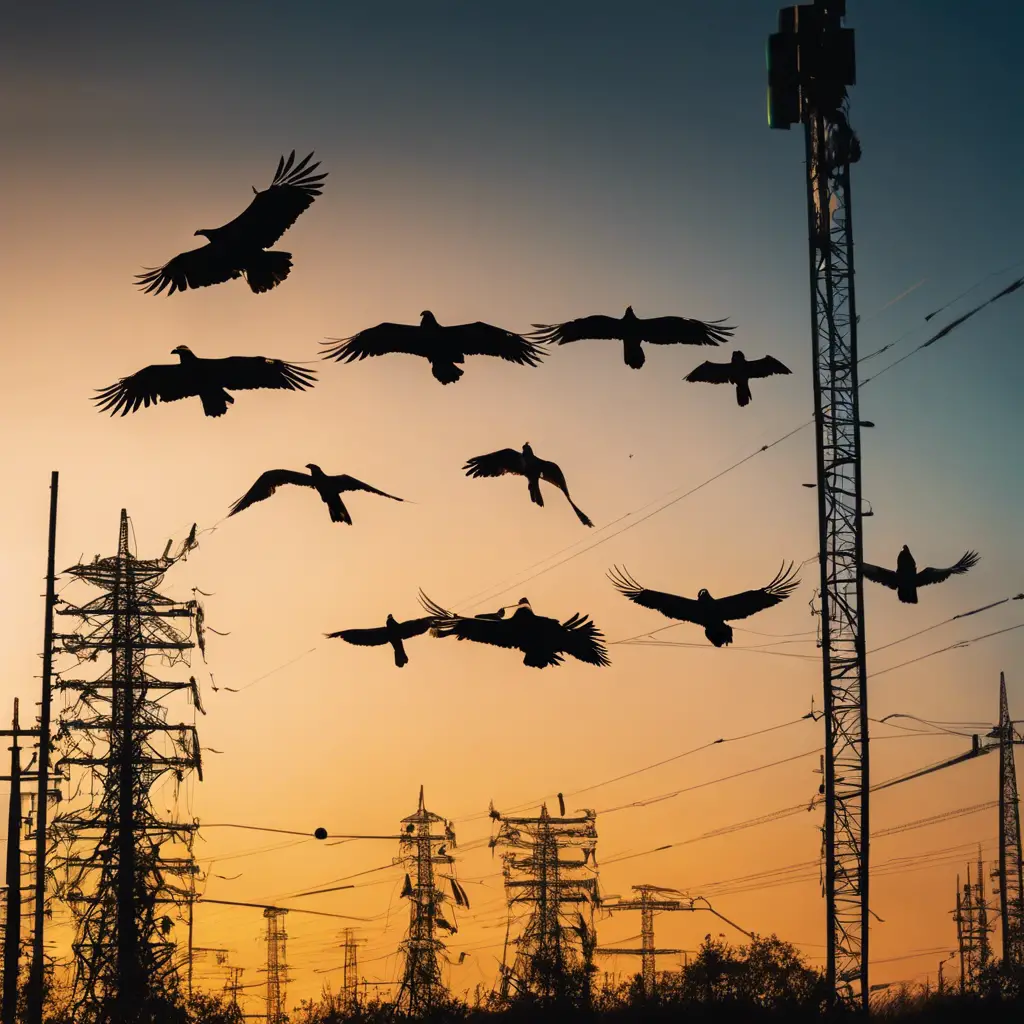
Golden eagles boast remarkable speeds, averaging 60 mph in level flight and reaching up to 200 mph in diving attacks, outpacing all terrestrial animals and ranking them as the second fastest birds after falcons.
In normal flight, the golden eagle can reach cruising speeds between 28 and 32 mph. These eagle species velocity profiles demonstrate their ability to sustain impressive speeds of 150 to 200 mph, thanks to their aerodynamic bodies and expansive wingspans.
When considering how fast golden eagles can fly, it’s evident they’ve evolved for velocity, covering vast distances—up to 250 miles during migration days.
Their hunting strategy often involves diving at speeds that ensure they surprise and overpower slower-moving prey like goats and deer.
Wing Structure and Aerodynamics
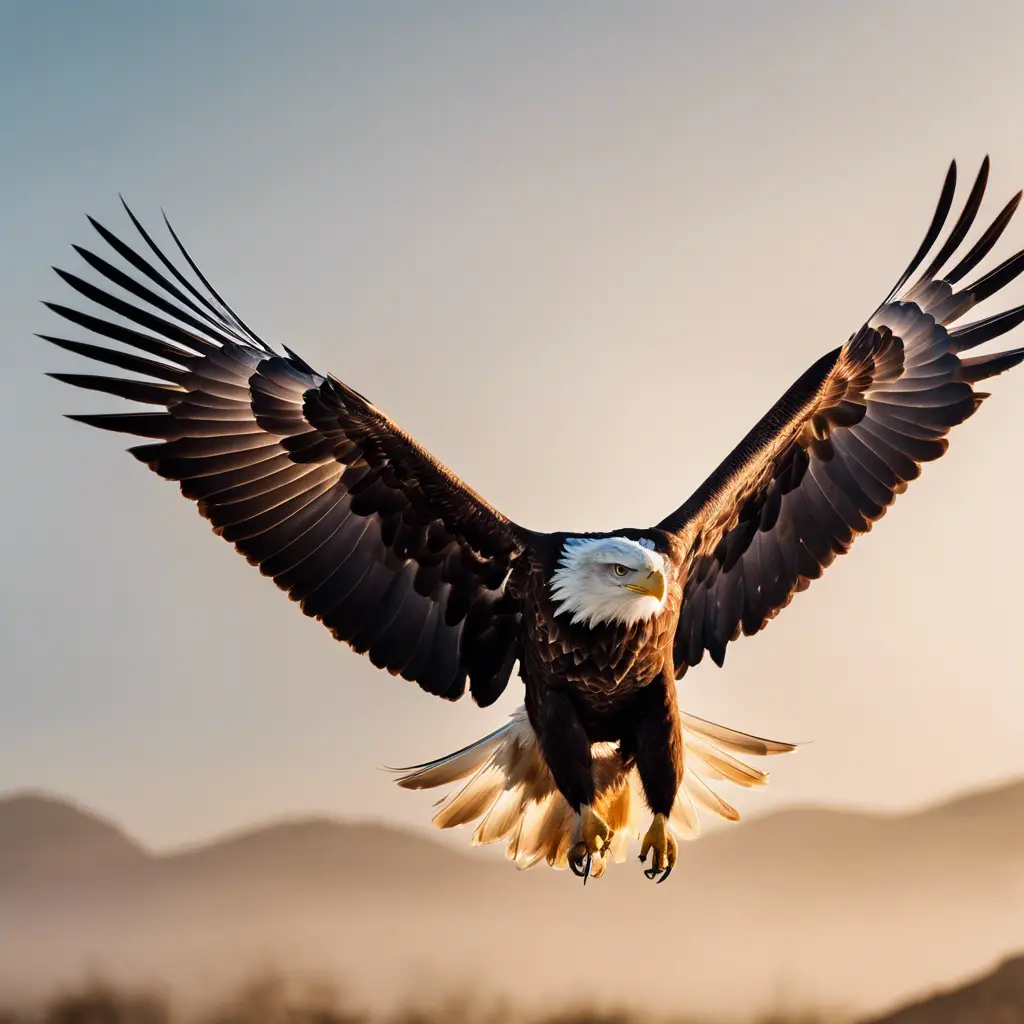
Examining an eagle’s wing structure reveals a sophisticated blend of broad and lengthy wings that ensure both stability and agility in flight. As large birds of prey, eagles are capable of impressive feats thanks to their wing structure and aerodynamics. They can soar effortlessly, using rising air currents to gain altitude with minimal energy expenditure.
- Broad Wings : Spanning wide, these wings act like efficient gliders to reduce drag and support soaring.
- Long Wings : Length aids in horizontal flight, providing lift and allowing eagles to cover great distances.
- Powerful Muscles : Enable rapid takeoff and the strength to carry heavy loads.
- Alulae : These small feathers adjust airflow and enhance maneuverability.
- Airfoil Shape : Optimizes the ability to soar, by smoothing airflow and increasing lift while minimizing resistance.
Factors Influencing Flight Speed
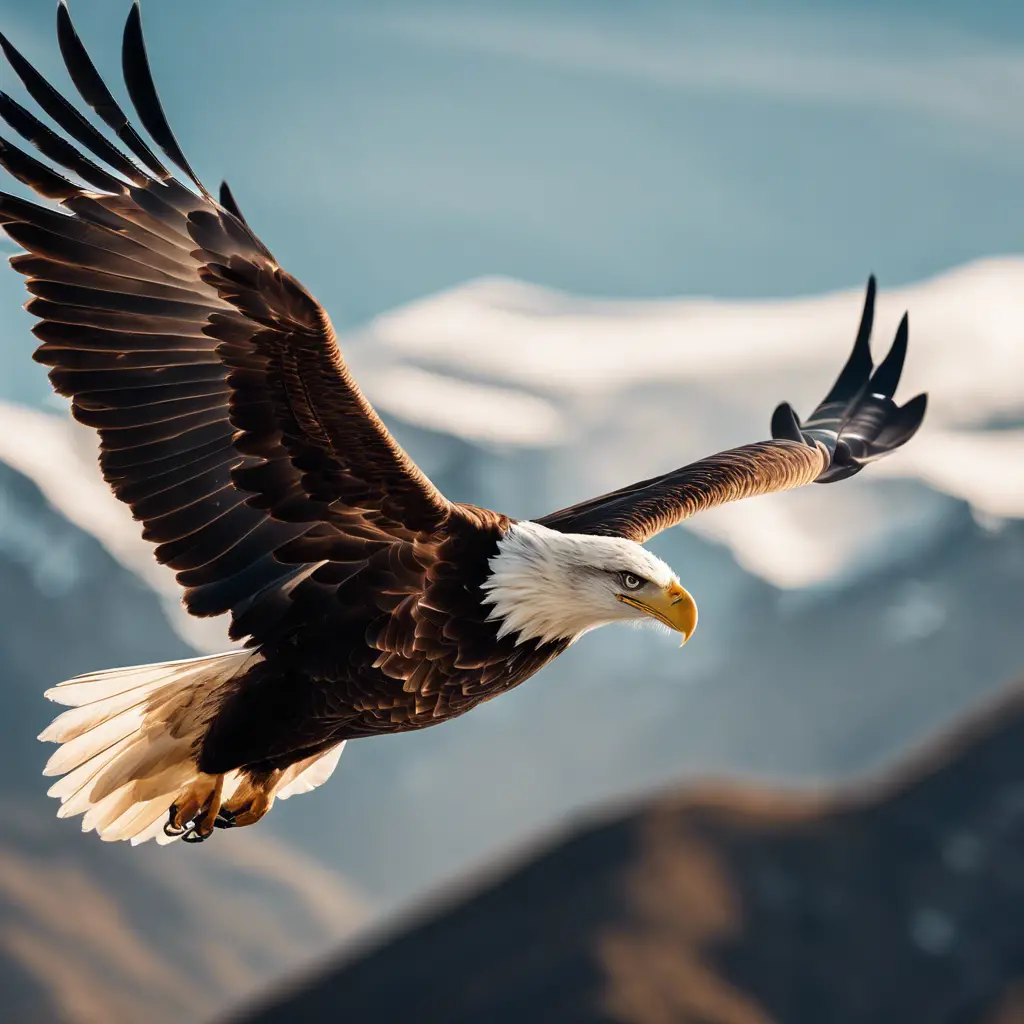
Several factors can markedly influence an eagle’s flight speed, including wind resistance, altitude, the bird’s age and physical condition, its energetic needs, and both visual acuity and environmental conditions.
Eagles, known for soaring high with incredible speeds, can fly at different velocities, often exceeding 30 miles per hour while gliding and reaching up to 100 miles per hour when diving for prey.
Wind resistance can affect their speed, especially when facing headwinds or leveraging tailwinds. At higher altitudes, thinner air demands more effort for maneuverability, impacting speeds.
An eagle’s prime physical condition enables it to catch prey efficiently, utilizing thermal updrafts and excellent eyesight.
Younger eagles, still honing their skills, may fly slower than their experienced elders, whose energy-efficient flight patterns are fine-tuned for optimal hunting.
Eagle Speeds in Action
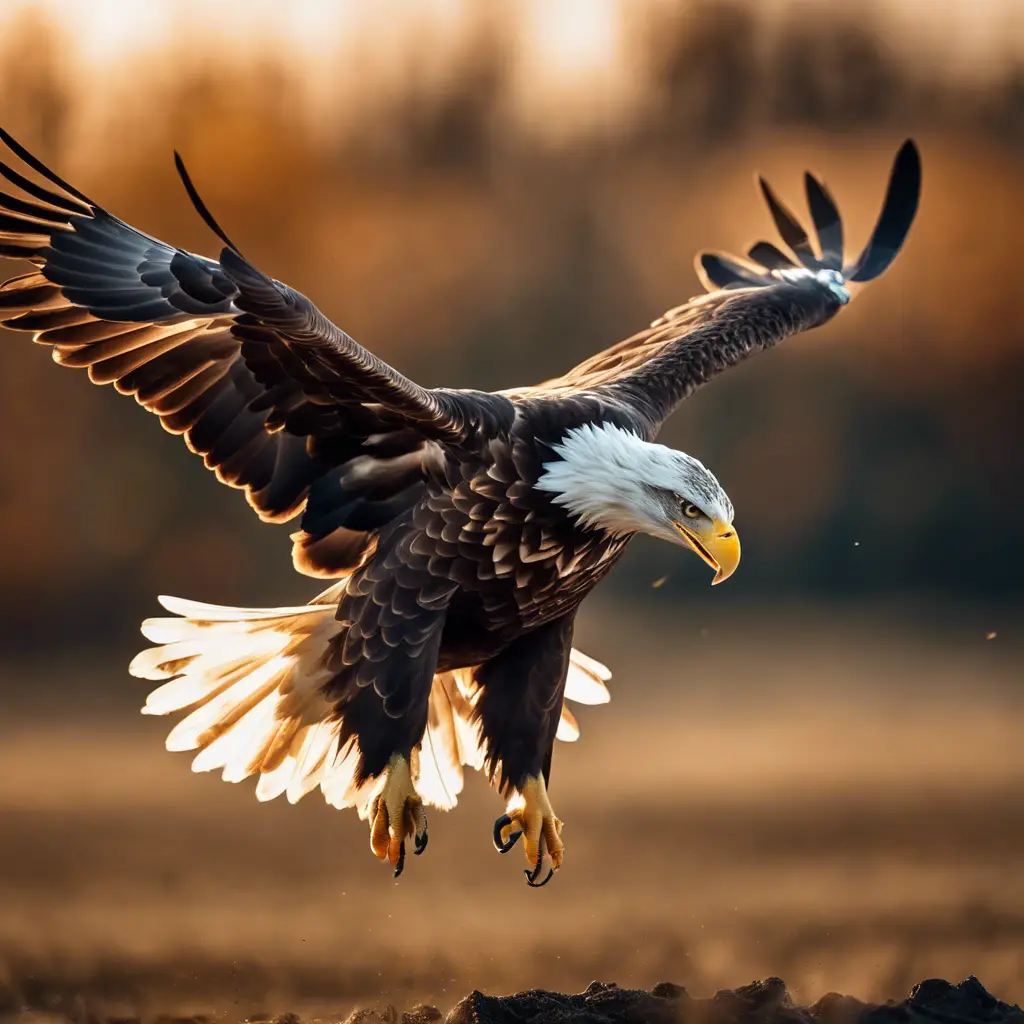
While factors like wind resistance and altitude play a significant role in determining flight speed, it’s the golden eagle’s remarkable hunting dives that truly showcase their astonishing velocity, reaching up to 200 mph as they plummet towards their prey.
Now, imagine the eagle speeds in action:
- A golden eagle soaring gracefully at heights with a wide wingspan, surveying the terrain below without flapping their wings.
- The sudden tilt of an eagle’s body as it spots a target, transitioning from eagle flying to diving.
- A bald eagle’s powerful wingbeats propelling it forward, effortlessly gliding across the sky.
- The intense focus of a golden eagle’s eyes, locked onto a distant animal, moments before the chase.
- The breathtaking dive of an eagle, outpacing even the peregrine falcon, in a high-speed pursuit.
These birds embody aerial mastery, transforming the skies into their hunting grounds with unmatched speed and agility.
Frequently Asked Questions
How fast can a bald eagle fly mph.
You’d be impressed to know that a bald eagle can fly at speeds of up to 75 mph when in level flight, and can dive at speeds over 100 mph when hunting prey.
Can a Eagle Fly 200 Mph?
You’ve asked if an eagle can fly at 200 mph; indeed, golden eagles may reach such speeds during dives, making them among the fastest birds when swooping down on their prey.
How Fast Can a Sea Eagle Fly?
You’re likely curious about sea eagles’ speed: they typically cruise at 30 mph, but can reach speeds of 50 mph in flight, though not as fast as the golden eagle’s dive.
How Far Can an Eagle Fly in a Day?
You’d be amazed to know that an eagle can fly up to 100 miles daily, and during migration, it can extend that feat to over 250 miles. They’re truly built for long-distance travel.
In conclusion, you’ve learned that golden eagles are astonishingly fast, diving at speeds up to 200 mph.
Their wing structure and aerodynamics are key to their velocity, allowing them to soar at 28 to 32 mph and cover vast distances.
Various factors, such as wind and prey pursuit, influence their speed.
Witnessing an eagle’s speed in action is to observe one of nature’s most impressive feats, showcasing the pinnacle of avian design and capability.

An avid ornithologist, zoologist and biologist with an unwavering passion for birds and wild animals. Dr. Wilson’s journey in ornithology began in childhood and led him to obtain a Ph.D. in Ornithology from the prestigious Avian Research Institute. He has worked closely with renowned experts in the field and conducted extensive research and field studies globally.
Related Posts:
How high can an eagle fly.
- What Does An Eagle Sound Like?
- What Is a Baby Eagle Called?
How Much Is a Bald Eagle Feather Worth?
How far can an eagle see, related news.

Privacy Policy


How fast can Eagles Fly?

Have you ever wondered how fast eagles can fly? We know that you have. They are such majestic creatures, and it’s interesting to know more about them. Well, wonder no more! We did a little research and found out some pretty amazing facts about eagle speed.
This article will talk about “How fast can Eagles fly?” There are different types of eagles worldwide. Each of them has different speed levels when flying. We’ll share the eagle flying speed in terms of different breeds. Golden eagle, martial, and sea eagles are notable if we consider some types. These birds come with various features and flying speeds.
How Fast Can Eagles Fly?
To kick start your topic about how fast eagles can fly, we have considered five different eagles. These are the Golden, Martial, Wedge-tailed, Stellar’s sea, and White-tailed eagle.
How Fast Can A Golden Eagle Fly?
Golden eagles are considered to be the fastest of all eagles. Most eagles can fly at a speed of more or less than 30 mph. However, the Golden eagles will fly at 150 to 200 mph.
These eagles aren’t golden entirely. They’re brown, but the wing feathers are golden.
So, that’s how they’re known as the golden eagle. However, their speed and agility make them fearless bird that preys easily on the air and ground. Next, we’ll talk about the Martial eagle, another fast eagle.
How Fast Can Martial Eagles Fly?
These eagles fly fast but not as quickly as the Golden Eagles. The Martial Eagle usually has a speed of 140 to 150 miles per hour . However, among all the African Eagles, these eagles are the largest.
These eagles will fly and hunt alone. But, due to their opportunistic character, they’re one of the most dangerous predators in the bird family. They’ll feed on monkeys, lambs, and birds like herons and geese.
How fast can Wedge-Tailed Eagles fly?

Wedge-tailed eagles aren’t as fast as the golden or martial eagles. But they can fly for a longer time. Also, they reach higher altitudes than most of the eagles. These eagles fly up to 2 km in the sky and can fly for 90 minutes.
The Wedge-tailed eagles have a speed of 30 mph . The Wedge-tailed Eagle can hunt alone, with a partner, or with a group of other birds. When a wedge-tailed eagle group attacks, they can kill animals as large as adult kangaroos.
How Fast Can Steller’s Sea Eagles Fly?
These eagles are as massive as you’d expect an eagle to be. When fully grown, they can weigh up to 25 pounds. Also, their wings will measure from 8 to 9 feet when spread.
They have a top speed of 150 mph, just like a Golden Eagle. However, the golden eagles can have a peak speed of 200 mph, which a Steller’s sea eagle won’t have. They’re diverse in terms of habitat. You can find them in Asia, Europe, and also the USA. Usually, they’ve got a lifespan of 20 to 22 years.
How Fast Can The White-Tailed Eagle Fly?
The White-tailed eagle comes with variety in speed when flying flat and diving. While diving, they can reach a speed up to 100 mph . However, they’ll have a rate of 30 mph during flat flying.
Due to their whitetail, they’re named white eagle. However, they’re also known as the gray eagle for their plumage. Like Steller’s Sea Eagle, the wings measure 8 feet when spread wide.
How High And Fast Can An Eagle Fly?
We’ve already talked about the speed of five different eagles. It seems eagles can have a top speed of 200 mph. However, some eagles can fly at 250 to 300 mph also .’ However, have we wondered how high an eagle fly can? Some eagles can fly at a high altitude of 2000 meters (2 km). But can an eagle fly over the clouds? Yes, they can when it’s raining.
An eagle can quickly fly over clouds with an average measurement of seven to eight feet wings. An eagle must cover 2400 to 2500 meters into the sky to fly over clouds.
How Long Can An Eagle Fly Without Landing?
It’s important to note that eagles have extreme agility and power. Also, the flying speed will be at least 30 mph. However, some eagles fly more than 100 mph.
But, eagles can fly up to 130 miles at a stretch . So, if they fly at a rate of 30 miles per hour, the time would be around 4 to 4 ½ hours. However, according to research and observation, they can also pass for a longer time.
Note that eagles usually don’t fly for four or more hours unless it’s necessary. They keep flying when there’s immediate danger on the ground in their habitat. But, they often land on earth to have water or hunt for food.
How Do Eagles Fly So Fast?
Eagles have strong body structures and wings. Their wings can spread up to eight feet when spread. So, with these features and characteristics, they can fly fast.
We’ve already mentioned the speed of different eagles. It seems they can fly at an average rate of 100 mph. While diving, they show even more speed and agility.
Can An Eagle Fly As High As A Plane?
Usually, eagles don’t fly as high as a plane . It’s important noting that aircraft will fly as high as 13000 to 14000 feet. However, eagles usually fly up to 2000 feet only. But, eagles can fly up to more than 10000 feet when necessary . So, one might wonder how they can manage oxygen at much higher levels. Well, eagles have a high level of hemoglobin in their body.
It helps them fly at higher altitudes without having any problems with oxygen. The particular mitochondria in the cells are functional to gain more oxygen in the blood vessels and muscles.
Can An Eagle Fly Higher Than A Plane?
Not all planes fly at the same level. Some aircraft, like military jets, will fly up to 30000 feet into the sky. But, an eagle can fly up to 13000 feet or more in the sky. So, eagles don’t always fly higher than a plane. Different factors can limit an eagle from flying higher than a plane. For example, the wind gust and direction are factors that help or determine an eagle to fly at higher altitudes.

Do Eagles Fly At Night?
No. Usually, we don’t find eagles flying at night. However, in rare cases, they hunt for food at night if they can’t manage it during the day. Eagles have good vision but not so well in the dark. That’s why they refrain from flying at night. Instead, these birds hunt for food all day long and return to the nest with food.
How Do Eagles Fly In A Storm?
Eagles can manipulate their flying speed with their wings . When the wind gust is over their limit, they fold their wings and become motionless. In this way, they go with the wind flow and fly accordingly.

How Far Can An Eagle Fly In A Day?
Eagles can fly up to 125 to 130 miles in a day. However, they can fly at an average or peak speed. For example, if they fly at an average of 30 mph, they’ll move for 3 to 4 hours.
When they need hunting all day long, they fly for such distances. They won’t always fly 130 miles. They quickly find foods with their vision and strength and go to the nest before evening.
Are Eagles Faster Than Falcons?
No, eagles aren’t faster than falcons. Falcons have an average of 240 to 250 mph speed.
On the contrary, eagles have an average speed of 200 mph . That’s 40 mph less than falcons. The diving and flat flying speed are both more for falcons. So, eagles won’t fly quicker than falcons.
Can An Eagle Fly Across The Ocean?
Yes, eagles can fly across the ocean. But, all the eagles don’t fly over the sea unless it’s required. Experts and researchers say that eagles can fly up to 2000 to 3000 miles across the ocean.
Can An Eagle Fly Higher Than A Hawk?
Hawks can fly up to 1000 meters high. On the contrary, the golden eagle can reach up to 2000 meters. So, eagles can fly higher than a hawk. The flying level of these two birds is a critical difference between them.
The eagle flies in a storm with long wings and an agile body structure. They can use the wind gust and direction and fly accordingly. They’re known to fold their wings and go along the wind when there’s a storm.
Final Words
To conclude the topic of how fast eagles can fly, we are confident that eagles are one of the most potent flyers among all the birds in the world. Their flying capacity is matchless. Not only do they fly higher, but also they can dive at an incredible speed and catch their prey quickly.
Even though they’re not the fastest flyers, they’re still one of the best in flying high and long-distance. Their vision is unmatchable, which helps them find food quickly from a great height.
Interesting articles:
- 10 Small Gray Bird with White Belly
- 10 White Birds with Long Necks
- 13 Yellow Birds with Black on Wing

Welcome to my website BirdieExpert.com. When I was a kid, I loved watching birds in my backyard. I love animals and especially birds. Here I will share everything I've learned over the years and everything I love about birds.
Similar Posts

Can You Teach A Crow To Talk?
There’s a famous saying that goes, “can you teach an old crow new tricks like talking?” The answer, of course, is yes. You can teach any animal new tricks if you put in the time and effort. It takes a lot of patience and repetition, but eventually the crow will learn to mimic your words. …
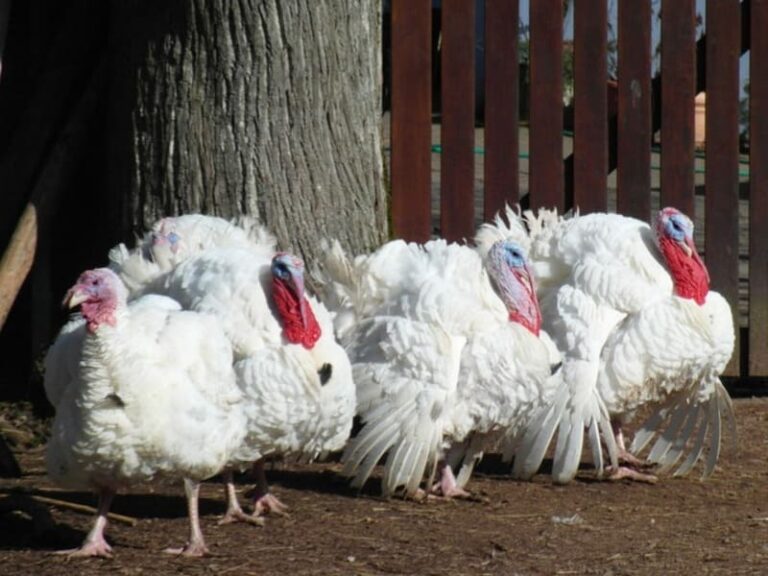
What Is A Group Of Turkeys Called?
Have you ever noticed a big flock of turkeys wandering around? Have you asked yourself what could possibly be going through their heads as they roam and chatter with each other? Or have you ever stopped and wondered, “What is this flock called anyway, what do a group of turkeys are called?” Curiosity has the…

Hummingbird Heart Rate: Why These Birds Are Marvels of Nature
Does the proverb “hummingbirds have hearts that beat like a drum” ever crossed your mind? Hummingbird heart rates are actually amazing; it is not just a figure of phrase. These small birds’ hearts beat up to 1,260 times per minute while flying, which is among the highest rates of any animal on Earth. The typical…
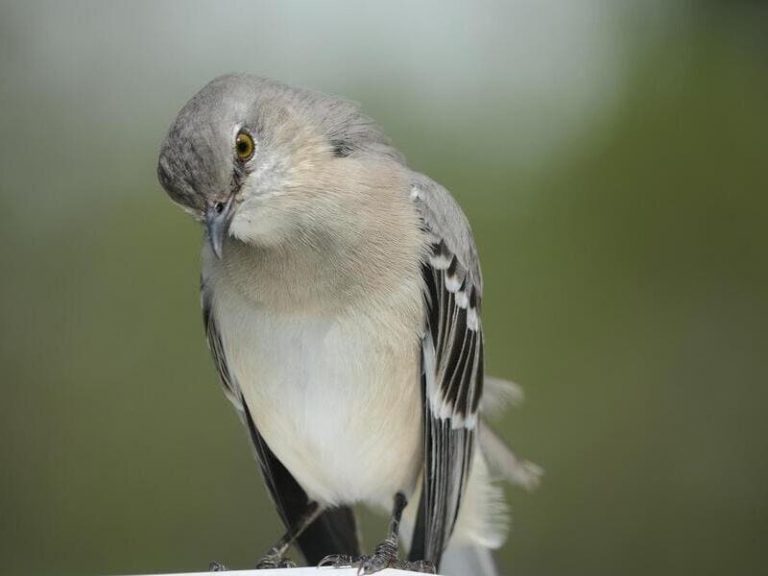
Birds That Look Like Mockingbirds
Have you been hearing an endless series of different birds singing outside your house? So chances are they could be a Mockingbird. These gray-bodied thin birds seem to put all their colors into their personality. They sing almost continuously, even at night. But every melodious sound you hear is not of mockingbirds. Various birds look…

Do Cardinals Mate For Life? (Everything You Need To Know)
If you’re curious about whether cardinals couple up and mate for life, you’re in the right place. Cardinals, members of the cardinal family (Cardinalidae,) are beloved backyard birds across much of North America. They brighten our days with their vibrant colors and bring a sense of calm to yards and gardens everywhere. But have you…

Can Turkeys Fly? You Need to Know This
Have you ever seen a Turkey flying? Have you purchased a Turkey but don’t know if it can actually fly? If yes, then this article is for you. For several years, the flying habits of Turkeys have remained a mystery. Can turkeys fly? This is a question that has been asked by millions of scientists…
Leave a Reply Cancel reply
Your email address will not be published. Required fields are marked *
Save my name, email, and website in this browser for the next time I comment.

Which Eagle Is The Fastest? Soar to Thrilling Discoveries
In the vast expanse of the sky, where the sun’s golden rays illuminate the world below, majestic creatures soar with grace and power. Eagles, with their impressive wingspans and razor-sharp talons, epitomize the essence of avian supremacy.
Among their many extraordinary qualities, their speed captivates the imagination and leaves us in awe.
In this article, we delve into the realm of these remarkable birds of prey to uncover the answer to a burning question: which eagle is the fastest?
As we embark on this journey, we must adopt the lens of objectivity, focusing on scientific facts and evidence.
From the Golden Eagle, a mighty hunter with impressive speed, to the White-tailed Eagle, a majestic bird of prey with surprising swiftness, we will explore each contender’s unique attributes.
Additionally, we will delve into the prowess of the Harpy Eagle, the Philippine Eagle, the Martial Eagle, the African Fish Eagle, and the Crowned Eagle, each with their own remarkable abilities.
Prepare to be transported to the realm of the skies, as we unveil the secrets of these magnificent creatures and crown the fastest eagle in the world .
Table of Contents
- 1 Key Takeaways
- 2 Which Eagle Is The Fastest
- 3 Introduction to Eagles and their Aerial Abilities
- 4 The Golden Eagle: A Mighty Hunter with Impressive Speed
- 5 The White-tailed Eagle: A Majestic Bird of Prey with Surprising Swiftness
- 6 The Harpy Eagle: A Powerful Predator with Remarkable Agility
- 7 The Philippine Eagle: A Critically Endangered Giant with Astounding Speed
- 8 The Steller’s Sea Eagle: A Magnificent Bird with Incredible Wing Power
- 9 The Bald Eagle: America’s National Symbol and a Skilled Hunter
- 10 The Martial Eagle: Africa’s Largest Eagle and a Ferocious Hunter
- 11 The African Fish Eagle: A Skilled Fisherman with Impressive Speed
- 12 The Crowned Eagle: A Stealthy Hunter with Surprising Speed and Strength
- 13 Conclusion: Unveiling the Fastest Eagle in the World
- 14.1 How many different species of eagles are there in the world?
- 14.2 What is the average wingspan of an eagle?
- 14.3 How do eagles catch their prey in mid-air?
- 14.4 What are the main threats to the survival of eagles in the wild?
- 14.5 How long do eagles typically live in the wild?
Key Takeaways
- The Golden Eagle follows closely behind, with a maximum speed of 150-200 mph.
- The White-tailed Eagle has a maximum speed of 70-80 mph, making it slower than the Golden Eagle.
- The Harpy Eagle has a maximum speed of 50-55 mph, making it one of the slower eagles in terms of speed.
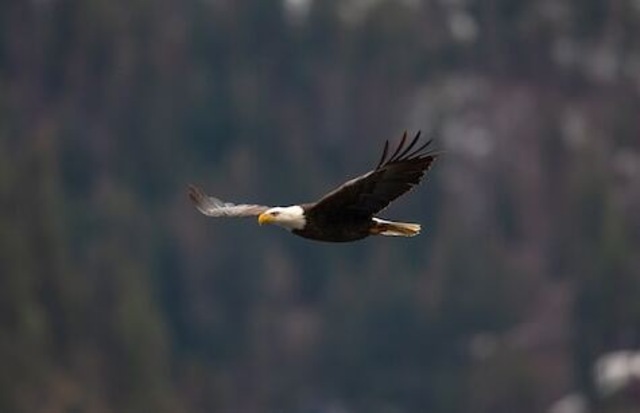
Which Eagle Is The Fastest
The fastest eagle is the Philippine Eagle , reaching speeds of up to 150 kilometers per hour (93 mph) during flight.
Its incredible speed allows it to swiftly maneuver through the dense forests of the Philippines in search of prey.
With its impressive wingspan and agile flight, the Philippine Eagle reigns as the undisputed champion of avian speed. 🦅💨
Introduction to Eagles and their Aerial Abilities
Eagles are renowned for their impressive aerial abilities, which enable them to soar through the skies with exceptional speed and grace.
These majestic birds play a crucial role in the ecosystem, as they are top predators and help maintain the balance of various populations in their habitats.
Eagle conservation efforts are therefore essential to safeguard the health of ecosystems they inhabit.
When it comes to their speed, eagles are known for their swift and efficient flight. For instance, the golden eagle, one of the largest and most powerful eagles, is a mighty hunter with impressive speed.
It can reach speeds of up to 150 miles per hour during its hunting dives, making it one of the fastest birds in the world.
This remarkable speed allows the golden eagle to swiftly catch its prey and survive in its challenging environment.
The Golden Eagle: A Mighty Hunter with Impressive Speed
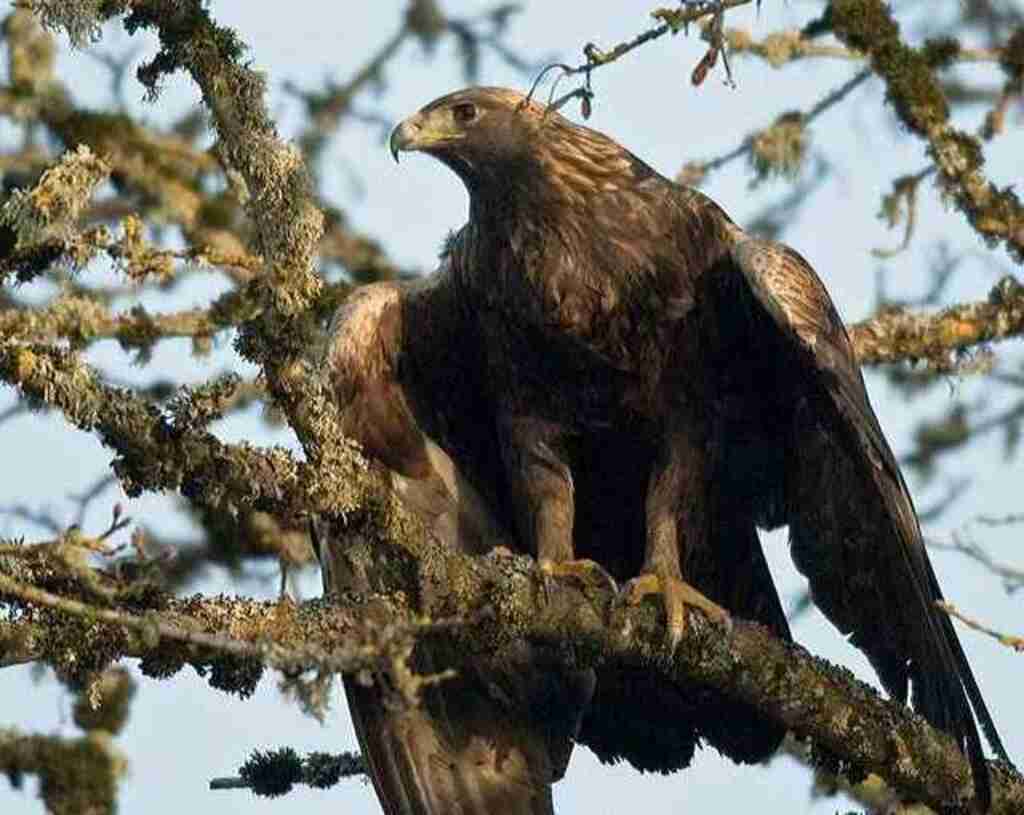
Renowned for its exceptional hunting abilities and remarkable velocity, the Golden Eagle stands as an impressive aerial predator.
With a wingspan that can reach up to 7.5 feet, this majestic bird is well-equipped for its hunting techniques.
The Golden Eagle primarily resides in mountainous regions, open grasslands, and tundra habitats, where it can effectively spot its prey from a great distance.
This species feeds on a variety of small to medium-sized mammals, birds, and reptiles.
When hunting, the Golden Eagle relies on its incredible speed, which can reach up to 150 miles per hour during a stooping dive. Its sharp talons and powerful beak allow it to swiftly capture and kill its prey.
Transitioning to the subsequent section, the white-tailed eagle showcases similar agility and speed in its hunting prowess.
The White-tailed Eagle: A Majestic Bird of Prey with Surprising Swiftness
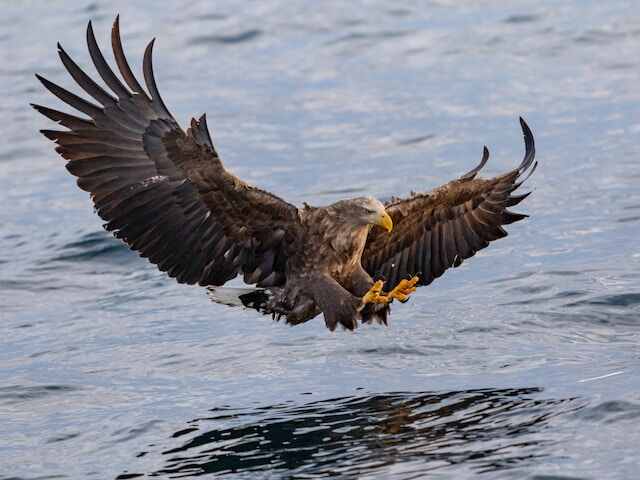
Symbolizing power and grace, the White-tailed Eagle soars through the skies with surprising swiftness, effortlessly navigating its environment in search of prey.
This majestic bird of prey showcases remarkable agility during its hunting endeavors. In flight, the White-tailed Eagle displays impressive swiftness, enabling it to cover vast distances while searching for food.
The agility of White-tailed Eagles in hunting is evident as they swiftly maneuver through the air, using their keen eyesight to spot potential prey from great heights.
They are known for their ability to dive at high speeds, reaching velocities of up to 40 miles per hour (64 kilometers per hour).
With their powerful wingspan and strong flight muscles, White-tailed Eagles can swiftly change direction, making them highly efficient hunters.
Transitioning to the subsequent section about the Harpy Eagle, we delve into another powerful predator with remarkable agility.
The Harpy Eagle: A Powerful Predator with Remarkable Agility
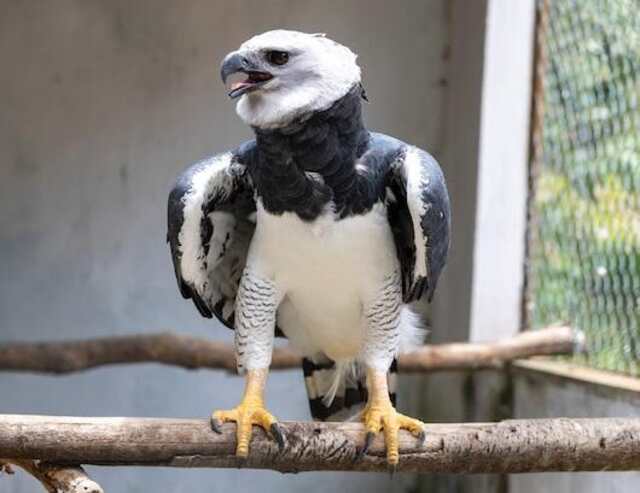
With its immense strength and astonishing agility, the Harpy Eagle is a formidable predator, effortlessly traversing dense rainforests in pursuit of its prey.
This species possesses unique physical characteristics that contribute to its remarkable hunting techniques.
The Harpy Eagle is known for its large, powerful talons, which can reach up to 5 inches in length, allowing it to snatch prey such as monkeys and sloths from the treetops.
Its broad wingspan, measuring up to 7 feet, enables it to maneuver swiftly through the forest canopy.
Additionally, the Harpy Eagle has keen eyesight, allowing it to spot prey from great distances. These adaptations make it a highly effective hunter in its native habitat.
Transitioning to the subsequent section about the Philippine Eagle, this critically endangered species showcases astounding speed in its pursuit of prey.
The Philippine Eagle: A Critically Endangered Giant with Astounding Speed

The Philippine Eagle, facing the threat of extinction, showcases remarkable speed in its pursuit of prey, darting through the dense rainforest like a lightning bolt piercing through the sky.
To fully appreciate the astonishing speed of this critically endangered giant, let us examine a comparison of the Philippine Eagle’s speed with that of other eagles:
The Philippine Eagle’s speed falls within the same range as the Steller’s Sea Eagle, another magnificent bird known for its incredible wing power.
However, unlike the Steller’s Sea Eagle, the Philippine Eagle faces numerous threats to its existence, including habitat loss and hunting.
To ensure the survival of this majestic creature, efforts must be made in endangered species conservation to protect its habitat and address the factors contributing to its decline.
Transitioning into the subsequent section, let us explore the remarkable attributes of the Steller’s Sea Eagle.
The Bald Eagle: America’s National Symbol and a Skilled Hunter

Boasting an iconic presence and unparalleled hunting abilities, the Bald Eagle commands attention as a symbol of American pride and a formidable predator.
This majestic bird, with a wingspan ranging from 6 to 7.5 feet, is known for its remarkable hunting skills. The Bald Eagle primarily preys on fish, using its sharp talons to snatch them from the water’s surface.
However, it is not limited to aquatic meals and is also capable of hunting small mammals and birds.
Compared to other eagle species, the Bald Eagle’s hunting techniques are impressive, showcasing its agility and precision.
It possesses exceptional eyesight, allowing it to spot prey from great distances. Moreover, its powerful wings enable swift and efficient flight, allowing it to chase its targets with remarkable speed.
Transitioning into the subsequent section about the martial eagle, another formidable hunter, we explore the African continent’s largest eagle and its ferocious hunting tactics.
The Martial Eagle: Africa’s Largest Eagle and a Ferocious Hunter
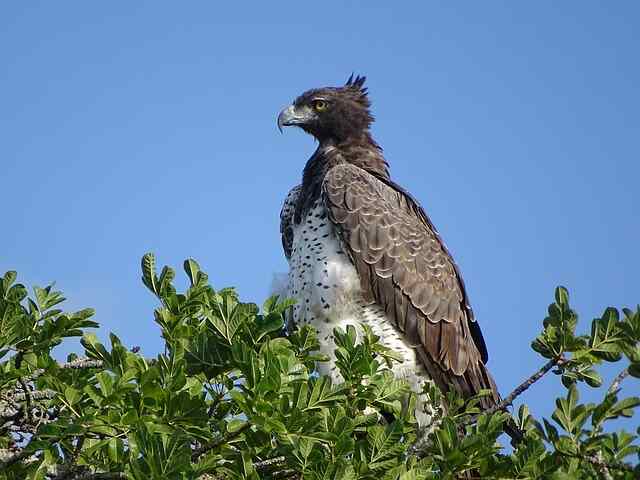
Renowned for its impressive size and fierce hunting prowess, the Martial Eagle of Africa commands awe as it dominates the skies.
With a wingspan that can reach up to 2.6 meters and a weight of up to 6.2 kilograms, this majestic bird is one of the largest eagles in the world.
Its size and strength allow it to take down prey that other birds would struggle to capture.
The Martial Eagle is known for its ferocious hunting techniques, which include swooping down from great heights and using its powerful talons to grasp and kill its prey.
This formidable predator primarily feeds on small to medium-sized mammals, such as hares and mongooses, but has also been known to take down small antelope.
Its speed and agility in flight make it a formidable hunter, capable of reaching speeds of up to 80 kilometers per hour.
The Martial Eagle’s hunting skills and dominance in the African skies make it a truly remarkable species.
Transitioning to the next section, the African Fish Eagle showcases its own impressive speed and fishing abilities.
The African Fish Eagle: A Skilled Fisherman with Impressive Speed
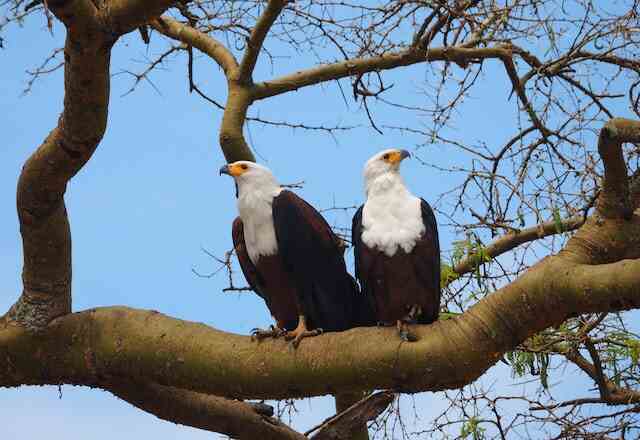
The African Fish Eagle is known for its exceptional fishing skills and impressive speed. When comparing the fishing techniques of the African Fish Eagle to the Bald Eagle, it becomes evident that the African Fish Eagle is more skilled in this aspect.
The African Fish Eagle has a unique hunting strategy, where it swoops down from its perch and uses its strong talons to snatch fish from the water’s surface. This technique requires precise timing and agility.
In contrast, the Bald Eagle primarily relies on scavenging or stealing prey from other birds.
Additionally, when comparing the African Fish Eagle to the Harpy Eagle, the latter is known for its exceptional agility and hunting strategies in the dense rainforest.
The African Fish Eagle, on the other hand, is adapted to hunting near bodies of water and relies on its impressive speed and precision.
Transitioning to the subsequent section, the Crowned Eagle possesses surprising speed and strength, making it a stealthy hunter in its own right.
The Crowned Eagle: A Stealthy Hunter with Surprising Speed and Strength
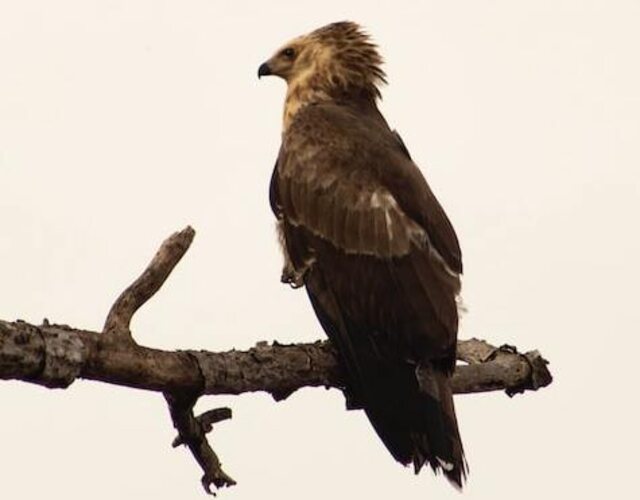
Contrary to expectations, the Crowned Eagle exhibits a remarkable combination of stealth, speed, and strength in its hunting tactics. This species of eagle is renowned for its ability to silently approach its prey, making it an incredibly effective hunter.
With its broad wingspan and powerful muscles, the Crowned Eagle can reach impressive speeds of up to 50 miles per hour (80 kilometers per hour) in pursuit of its prey.
Additionally, this eagle possesses exceptional strength, enabling it to capture and carry prey that is often larger and heavier than itself. Its strong legs and sharp talons make it a formidable predator in its habitat.
The Crowned Eagle’s surprising speed and strength allow it to thrive as a top predator in the ecosystem.
Transitioning into the conclusion, it becomes evident that the Crowned Eagle’s impressive hunting abilities make it a strong contender in the discussion of the fastest eagle in the world.
Conclusion: Unveiling the Fastest Eagle in the World
In conclusion, the Crowned Eagle’s remarkable combination of stealth, speed, and strength solidifies its position as a formidable predator in the ecosystem, showcasing its impressive hunting abilities.
To further understand its speed, it is essential to compare it to other birds of prey.
The table below provides a comprehensive comparison of the Crowned Eagle’s speed with that of other notable eagles and falcons:
As demonstrated, while the Crowned Eagle’s speed is impressive, it falls short compared to the breathtaking speeds of the Peregrine Falcon and the Golden Eagle.
However, it is important to note that the Crowned Eagle’s stealth and strength compensate for its slightly lower speed.
This combination enables it to successfully hunt and capture its prey, making it a formidable predator in its own right.
Frequently Asked Questions
How many different species of eagles are there in the world.
There are approximately 60 different species of eagles in the world. These majestic birds inhabit various habitats, from mountains to forests, and have been the focus of significant conservation efforts to protect their populations and preserve their habitats.
What is the average wingspan of an eagle?
The average wingspan of an eagle is approximately 6 to 7 feet. Eagle hunting techniques and unique adaptations of their wings, such as large surface area and strong flight muscles, contribute to their impressive wing span.
How do eagles catch their prey in mid-air?
Eagles employ various hunting techniques and prey selection strategies in mid-air. They swoop down from great heights, using their keen eyesight and powerful talons to snatch their prey. These tactics reflect their adaptability and predatory prowess.
What are the main threats to the survival of eagles in the wild?
Habitat loss and illegal hunting are the main threats to the survival of eagles in the wild. These factors lead to population declines and can disrupt their ecological balance, making conservation efforts crucial.
How long do eagles typically live in the wild?
The average lifespan of eagles in the wild is typically around 20 to 30 years. Various factors can affect eagle lifespan, such as predation, habitat loss, and availability of prey.

Meet Vince, the passionate founder and author of Learn Bird Watching, boasting 30 years of birding experience. With an unwavering mission to empower fellow bird enthusiasts, Vince shares invaluable wisdom and guidance. As a dedicated moderator and contributor to Quora's Bird Watchers' Club, he actively engages with the birding community, where his insightful answers have garnered over 440,000 views and over 2,670 upvotes. Whether you're a budding birder or a seasoned avian aficionado, his wealth of knowledge is at your service.
View all posts

What is a bald eagle?
The bald eagle is a large, powerful bird that has been the national symbol of the United States since 1782, when it was first placed with outspread wings on the country’s Great Seal as a sign of strength. Bald eagles don’t actually have bare heads. Their name is derived from the old English word “Balde,” which means white—a nod to the snowy-white feathers that cover their heads and tails. Most of these majestic, brown-bodied creatures live in Alaska and Canada, but they also inhabit Mexico and every U.S. state except for Hawaii.
Despite their national fame, bald eagles were almost wiped out in the U.S. in the mid-1900s due to decades of sport hunting and habitat destruction. DDT, a pesticide that became popular after World War II, also wreaked havoc on bald eagles that ate contaminated fish, weakening their eggshells so much they’d crack during incubation. In 1972, the U.S. banned DDT use and began intensive population management strategies that led to eagle recovery in the wild and their eventual removal from the Endangered Species Act list in 2007. ( Most U.S. eagles suffer from lead poisoning, study suggests .)
Today bald eagle numbers continue to soar despite threats like illegal hunting and electrocution from power lines . A 2019 survey found that the population in the lower 48 states quadrupled since 2009.
Habitat and diet
While bald eagles occasionally live in arid areas, most reside in woods by rivers, lakes, and other bodies of water rich with fish, their main food source. Their diets also include birds, turtles, and small mammals such as squirrels and rabbits.
To conserve energy, these opportunistic creatures sometimes scavenge on dead animals or steal prey from birds and other animals despite being gifted hunters themselves. Like hawks, falcons, and other predatory birds, bald eagles are considered raptors and have a number of adaptations that make them built for the chase: razor-like talons for puncturing and carrying up to eight-pound victims , a large wingspan for conserving energy by soaring, and a dense coating of light-detecting cells on their retinas that helps them spot prey from up to a mile away . ( Winter is prime time for watching bald eagles—here's where to spot them .)
Once an eagle has secured a meal, it uses the sharp edges of its curved beak to slice through flesh or scales.
Breeding and family life
Most bald eagles reach sexual maturity at age four or five and breed in early spring. Males and females bond by performing dance-like air displays like the “cartwheel courtship flight,” in which a pair flies high into the sky, locks talons, does a cartwheel-like spin downward, and then breaks off right before hitting the ground.
Those teamwork skills come in handy when it’s time to build nests, stick structures lined with grass and other materials that can take several months to construct. Most couples build them at the tops of tall trees strong enough to support the enormous structure— the largest nest of any bird in North America at about six feet wide and four feet deep. Pairs living in treeless areas build nests on cliffs or, on rare occasions, the ground. ( See photographs depicting the everyday lives of this national symbol .)
Most bald eagle couples return to these sturdy homes each year to mate and care for a new pair of eaglets. Both parents play an active role in rearing; they deliver prey, place torn-up food into eaglet beaks, and fiercely guard little ones from predators like raccoons and ravens. The all-brown juveniles (which won’t have the distinctive white markings of their parents until age five) begin to fly at about 10 to 12 weeks and permanently leave the nest a month later.
Untethered to a breeding site, young eagles tend to roam far from their nests in directions that appear random. Adult birds are more intentional, migrating only as far as necessary to find sustenance. When lakes and rivers freeze, for example, Northern bald eagles fly to the coast or south to open water.
Although these highly territorial birds typically travel alone, they often roost together during non-breeding times in groups ranging from several birds to hundreds of them. Scientists think they congregate to socialize or pick up on information about the location and availability of prey. To communicate, they emit a variety of whiny, high-pitched vocalizations that may sound surprising coming from such brawny bodies.
Did you know?
- Environment
History & Culture
- History & Culture
- History Magazine
- Mind, Body, Wonder
- Coronavirus Coverage
- Paid Content
- Terms of Use
- Privacy Policy
- Your US State Privacy Rights
- Children's Online Privacy Policy
- Interest-Based Ads
- About Nielsen Measurement
- Do Not Sell or Share My Personal Information
- Nat Geo Home
- Attend a Live Event
- Book a Trip
- Inspire Your Kids
- Shop Nat Geo
- Visit the D.C. Museum
- Learn About Our Impact
- Support Our Mission
- Advertise With Us
- Customer Service
- Renew Subscription
- Manage Your Subscription
- Work at Nat Geo
- Sign Up for Our Newsletters
- Contribute to Protect the Planet
Copyright © 1996-2015 National Geographic Society Copyright © 2015-2024 National Geographic Partners, LLC. All rights reserved

Golden Eagle Behavior

A Golden Eagle surveys his world atop a rock in Boulder, CO. Photo © Rob Palmer, www.raptorphotos.com
Golden Eagle Sky Dancing (Cornell Lab of Ornithology)

This book is a glorious read, and an uplifting experience for anyone who loves eagles. Originally published in 1972 by Simon & Schuster, it remained on the New York best sellers list for 8 weeks. It is available at our online store.
Cornell Chronicle
- Architecture & Design
- Arts & Humanities
- Business, Economics & Entrepreneurship
- Computing & Information Sciences
- Energy, Environment & Sustainability
- Food & Agriculture
- Global Reach
- Health, Nutrition & Medicine
- Law, Government & Public Policy
- Life Sciences & Veterinary Medicine
- Physical Sciences & Engineering
- Social & Behavioral Sciences
- Coronavirus
- News & Events
- Public Engagement
- New York City
- Photos of the Week
- Big Red Sports
- Freedom of Expression
- Student Life
- University Statements
- Around Cornell
- All Stories
- In the News
- Expert Quotes
- Cornellians
Turbulence gets eagles up to speed
By david nutt.
Most sensible air travelers dread turbulence. A little atmospheric hiccup can shake airplanes, rattle nerves and spill beverages. A Cornell-led collaboration has found that birds don’t mind at all.
By combining wind speed data with the measured accelerations of a golden eagle outfitted with GPS tracking instruments, the researchers suggest that, rather than hindering flight, turbulence is a source of energy that birds may use to their advantage.
This counterintuitive discovery could revise what we know about avian flight, and help the aerospace industry develop faster, more efficient ways to fly in turbulent environments.
The group’s paper, “ Turbulence Explains the Accelerations of an Eagle in Natural Flight ,” published June 8 in PNAS. The lead author was doctoral student Kasey Laurent.
While the flight of birds may appear easy and graceful to earthbound spectators, winged animals are actually navigating air flow that is structured, textured and constantly in flux, according to Gregory Bewley ’00, assistant professor in the Sibley School of Mechanical and Aerospace Engineering, who led the team.
“The air is always turbulent. This is really hard to convey, because unless there’s a cloud or smoke, it is transparent to us,” said Bewley. “I suspect these animals know a lot about turbulence in a practical sense. They’re not just responding to this as if it were an annoyance. They feel it and can probably anticipate it and respond in clever ways that I think would be useful for us to implement in our own flight vehicles.”
Bewley’s research background is in fluid mechanics, with a focus on the intrinsic properties of turbulence and its role in environmental settings. Ever since childhood, he’s been fascinated with the mechanical feat of bird flight; about five years ago, he connected with David Winkler, professor in the Department of Ecology and Evolutionary Biology, and began exploring the topic from an aerospace engineer’s perspective.
In order to take his experiments out of the lab and into the sky, Bewley’s team partnered with two groups – Conservation Science Global and Cellular Tracking Technologies. Scientists from these companies captured a female golden eagle in Alabama, rigged it with a solar GPS telemetry unit with an accelerometer weighing less than 3 ounces, then released the bird.
Over the course of 17 days, as the eagle migrated north along the Appalachian Mountains toward Canada, the GPS “backpack” transmitted more than 200 hours of data – including location coordinates, altitude, ground speed and tri-axial acceleration – via cellular networks.
Bewley’s lab then obtained wind speed data from the National Centers for Environmental Prediction’s weather history databases and mapped it onto the eagle’s flight measurements, identifying the bird’s various flying and nonflying behaviors.
They found a “highly irregular, fluctuating pattern” in the eagle’s accelerations, which resembles the typical trajectories of particles in turbulent airflows. At timescales ranging from 0.5 to 10 seconds – which translates to approximately 1 to 25 wingbeats – the eagle’s accelerations and atmospheric turbulence were completely in synch.
“We asked how much of that acceleration can be explained by the turbulence in the atmosphere,” Bewley said. “And the answer is, within an interval of frequencies between about 0.1 and 1 hertz, the whole signal can be explained by atmospheric turbulence. It’s almost as if, instead of the eagle, you put a feather out in the wind. You would see the same thing. This turbulence has such a strong effect that everything about this eagle that makes it alive, such as hunting, is subordinate.”
And just how intense are these accelerations? As a point of comparison, people riding in a car or aboard a commercial flight experience less than 0.1 g, or one factor of earth’s gravitational acceleration. Meanwhile, the accelerations of birds exceed 1 g – which would throw those human passengers out of their seats.
Over longer timescales, the eagle exerts more and more control over its flight. Bewley surmises this connection with turbulence is even more pronounced in smaller creatures.
“The eagle is a rather large bird,” Bewley said. “So if this holds for this large, relatively heavy, relatively fast animal, I think it must only be more true for smaller, slower, lighter-weight animals. I imagine they are more susceptible to the turbulence or more involved with it.”
Of course, aeronautical engineers strive to reduce turbulence as much as possible, and no airline passenger or pilot wants a bumpy ride. But Bewley believes there are opportunities to harness the energy of turbulence, particularly for person-less transport and small reconnaissance aircraft.
“If you could find a path in which every vortex is pushing you the right way, then obviously you get there a little faster with a little less energy,” Bewley said. “We’re still working hard to understand turbulence by itself. I think it’s fascinating that there might be some practical empirical knowledge embodied in wildlife that we don’t appreciate yet.”
Co-authors include Tobias Ginsburg ’21 and researchers from Cellular Tracking Technologies, Conservation Science Global, West Virginia University and SABER Consulting.
The research was partially funded by the Friends of Talladega National Forest.
Media Contact
Get Cornell news delivered right to your inbox.
You might also like

Gallery Heading
How Does the Speed of a Bald Eagle Compare to Other Birds?
Author Dominic Townsend
Posted May 18, 2022

The bald eagle is a magnificent bird . It is very large, with a wingspan of up to 8 feet. The bald eagle is also very fast, with a top speed of about 200 miles per hour. This is much faster than most other birds. The bald eagle's speed is due to its large wings and its powerful muscles . The bald eagle is adapted to live in habitats where there is a lot of open space and where there are large trees to perch in. The bald eagle is a top predator in its environment, and its speed helps it to catch its prey.
How does the speed of a bald eagle compare to that of an airplane?
How does the speed of a bald eagle compare to that of a car, how does the speed of a bald eagle compare to that of a cheetah.
Bald eagles are among the fastest flying birds in North America. They can reach speeds of up to 100 miles per hour when diving for prey, and have been known to sustain speeds of 35-40 miles per hour when flying level. In contrast, the average speed of an airplane is around 600 miles per hour. So while a bald eagle is no slouch in the speed department, it is no match for an airplane.
There are a few factors that account for the difference in speed between bald eagles and airplanes. First, bald eagles have a much smaller body size than airplanes. This gives them a considerable advantage in terms of weight and aerodynamics. Additionally, bald eagles have powerful wing muscles that allow them to generate a lot of lift, enabling them to reach high speeds when diving. However, the wings of bald eagles are not designed for sustained speed, which is why they cannot match the speed of an airplane.
The speed of an airplane is due largely to its engine power. Airplanes are powered by jet engines, which are able to propel them forward at extremely high speeds. Additionally, the shape of an airplane's wings is designed for sustained speed, which is why they are able to fly so much faster than bald eagles.
While the speed of a bald eagle is impressive, it is no match for the speed of an airplane. The difference in speed is due to a combination of factors, including body size, wing design, and engine power.
The Bald Eagle is the national bird of the United States of America. The bald eagle's scientific name, Haliaeetus leucocephalus, means "white-headed sea eagle". The bald eagle is one of the largest birds in North America, with a wingspan that can reach up to 2.5 meters (8.2 feet). The bald eagle is a very powerful flyer, and can reach speeds of up to 320 kilometers per hour (200 miles per hour) when diving for prey. The average speed of a car is about 60 kilometers per hour (37 miles per hour). Therefore, the speed of a bald eagle is more than five times that of a car.
The bald eagle is a powerful and skilled hunter. It hunts fish by swooping down from the sky and grabbing them with its talons. The bald eagle will also eat small mammals , such as rabbits and squirrels. The bald eagle has very sharp eyesight , and can see prey from a distance of up to 2 kilometers (1.2 miles).
The bald eagle is a protected species in the United States, and its population has increased in recent years. However, the bald eagle is still considered to be a threatened species in some parts of its range.
The bald eagle is a large, powerful raptor with a wingspan that can reach up to 2.5 meters. They are incredibly skilled flyers, capable of reaching speeds of over 320 kilometers per hour. In contrast, cheetahs are the fastest land animals on the planet, capable of reaching speeds of up to 120 kilometers per hour.
So, how does the speed of a bald eagle compare to that of a cheetah?
While the bald eagle is certainly faster in the air, the cheetah is much faster on the ground. This is largely due to the fact that cheetahs have evolved specifically for speed, with their long legs and aerodynamic bodies .
So, while the bald eagle may be the king of the skies, the cheetah is the undisputed king of the land.
How does the speed of a bald eagle compare to that of a human?
When it comes to pure speed, there is no contest between a bald eagle and a human – the eagle is significantly faster. However, when sprinting, human runners can reach speeds of up to 27 miles per hour, whereas bald eagles only fly at around 30 miles per hour. Nevertheless, when flying at cruising speeds, bald eagles can reach speeds of up to 50 miles per hour, whereas humans can only manage around 10-15 miles per hour.
Interestingly, human beings are not actually the slowest creatures on the planet – that accolade goes to the garden snail, which only moves at a rate of 0.03 miles per hour. In contrast, the fastest creatures are the cheetah, which can run at speeds of up to 70 miles per hour, and the peregrine falcon, which can fly at eye-watering speeds of up to 242 miles per hour.
So, there you have it – when it comes to speed, bald eagles are not to be sniffed at, but they are ultimately outdone by both humans and some other animals. Nevertheless, these magnificent birds of prey are still an awe-inspiring sight to behold, whether they are flying high in the sky or swooping down to catch their next meal.
How does the speed of a bald eagle compare to that of a bullet?
Bald eagles are large, powerful birds of prey with impressively long, broad wings. They are very fast flyers, and have been known to reach speeds of up to 150 miles per hour when glide-flying or swooping down on prey. In contrast, bullets typically travel at speeds of around 1,000 to 1,500 feet per second, which works out to be around 700 to 1,000 miles per hour. So while bald eagles are no slouches when it comes to speed, they are still significantly slower than bullets.
There are a few reasons why bald eagles are not as fast as bullets. One is that they are not built for speed. Their bodies are quite large and bulky, which makes them more suited for cruising at lower speeds and swooping down on prey, rather than flying at high speeds for prolonged periods of time. Additionally, their wings are not as aerodynamic as those of many other birds, such as seagulls or swallows, which are designed for long-distance flying.
Another reason why bald eagles are not as fast as bullets is that they simply do not need to be. When it comes to hunting, they rely more on their keen eyesight and powerful talons to make a kill, rather than speed. Additionally, bald eagles are not typically hunted by other animals, so they do not need to be able to outrun predators.
So, while bald eagles are indeed fast flyers , they are not as fast as bullets. Their slower speed is due to a combination of their physical build and their hunting habits .
How can bald eagles fly so fast?
Bald eagles are among the fastest flying birds in North America. They have been recorded flying at speeds of up to 35 miles per hour. The key to their speed is their powerful wings. Bald eagles have a wingspan of up to 7 feet. Their flight feathers are specially adapted to allow them to fly at high speeds. The leading edge of their wings is smooth and curved. This shape reduces air resistance and makes it easier for them to fly through the air. The bald eagle’s wings are also very strong. This allows them to flap their wings rapidly and generate the lift needed to fly at high speeds. When bald eagles are flying in a straight line, they can reach speeds of up to 35 miles per hour. However, when they are flying in bursts, such as when they are chasing prey, they can reach speeds of up to 50 miles per hour.
What is the fastest speed a bald eagle has been recorded flying?
The fastest recorded speed of a bald eagle in level flight is at least 120 km/h (74.6 mph) and possibly up to 153 km/h (95.3 mph ). The fastest recorded speed of a bal d eagle in a dive is300 km/h (186.4 mph). These speeds were recorded using RADAR and telemetry devices and were measured in still air. Given that the average cruising speed of a bald eagle is 48 km/h (30 mph), the recorded speeds are quite impressive.
There are a number of reasons why the bald eagle is such a fast flyer. First and foremost, the bald eagle has a large wingspan relative to its body size. The bald eagle's wingspan can range from 2.1-2.45 m (6.9-8.0 ft), with the average being 2.3 m (7.5 ft). This means that the bald eagle's wingspan is about 20% larger than its body length. This large wingspan results in a high wing loading , which is the ratio of an animal's body weight to the area of its wings. A high wing loading indicates that the animal's wings are relatively small and/or its body is relatively large, both of which contribute to increased flight speed.
Another reason for the bald eagle's impressive speed is its use of thermal currents. Thermal currents are currents of rising air that are created by the sun heating the ground. These rising currents of air provide lift , which reduces the amount of energy the bald eagle needs to expend to stay airborne. The bald eagle will often make use of thermals to gain altitude, from which it can then glide for long distances.
Finally, the bald eagle's feathers are specially adapted for flight. The bald eagle's feathers are very stiff and have a very high aspect ratio, which is the ratio of the length of the feather to its width. This high aspect ratio gives the bald eagle's feathers a greater aerodynamic efficiency, meaning they are better able to generate lift and reduce drag . All of these factors - large wingspan, high wing loading, use of thermals, and aerodynamically efficient feathers - come together to make the bald eagle one of the fastest flying birds in the world.
Frequently Asked Questions
How fast can a wedge tailed eagle fly.
A wedge tailed eagle can travel at a speed of 50 mph (80 kph).
How far do Eagles fly in a day?
In theory, eagles can fly up to 150 miles in a day. In reality, most migrate at much lower speeds, covering distances of 10-30 miles per day.
Do bald eagles fly without flapping wings?
Bald eagles do not fly without flapping wings, but they are naturally good gliders. When they need to take off quickly or maneuver in tight spaces, they can flap their wings briefly.
What is The wingspan of an eagle in feet?
The wingspan of an eagle in feet is about 7.9 feet.
How fast is a bald eagle?
A bald eagle can travel at a top speed of 128 Km/p.
Featured Images: pexels.com

Dominic Townsend
Writer at CGAA
Dominic Townsend is a successful article author based in New York City. He has written for many top publications, such as The New Yorker, Huffington Post, and The Wall Street Journal. Dominic is passionate about writing stories that have the power to make a difference in people’s lives.

How Do the Areas of the Parallelograms Compare?

How Do the following Compare in the Amount of Alcohol?

How Big Is Japan Compared to the Us?

Characteristics Q&A about Bald Eagles with Peter Nye New York Department of Environmental Conservation
Q: How tall is a bald eagle? A: About 30 inches.
Q: Why are the adult eagles' heads white? A: That's a great and logical question! While no one knows the answer for sure (not scientifically proven) below are some hypotheses:
- for visibility, to makes it easy to locate and identify other individuals of the species
- for denoting sexual maturity, versus immature eagles, which lack the white head
- for indicating dominance, like top-dog
Q: How can you distinguish between adult male and female bald eagles? A: Visually, they look identical, but as with most raptors, the female is larger (heavier and bigger) than the male. Sometimes this is clearly visible in a pair, when you see both together at the nest, but otherwise, we are just guessing. In the hand, biologists can differentiate male versus female using two key body size measurements, the depth of the bill (beak) and the length of the hallux talon, on the rear toe. These measurements are plugged in to a neat formula developed by eagle biologist Gary Bortolotti back in the early 1980's, based on numerous measurements of eagles of known sex.
Q. How can you tell the whether the bald eagle is a male or female? A . As with any birds where the genders have non-distinct plumages, the only ways to tell differences in sex are through size dimorphism (size differences) or in internal examination called a laparoscopy . Bald eagles exhibit size dimorphism; females on the average about 1/3 larger than males. Data compiled by Mark Stalmaster (1987 - "The Bald Eagle" pg. 16) found that 2 size measurements, beak depth and hallux (toe claw) length, show the greatest separation in sexes. These measurements can be used in the following equation: sex = (bill depth x 0.392) + (hallux length x 0.340) -27.694 (measurements in millimeters). If the answer is positive, the eagle is a female. If the answer is negative, the eagle is a male. See if you can figure out the sex of this eagle -- it is 1 of the 4 birds we are tracking in the western study: bill depth = 34.5 mm; hallux length = 43.0 mm. Practically, I can guess the sex of most birds when they are on the bait and in hand just by general size differences. Birds in the overlap area of the measurements are more uncertain; a subjective way to sex these is by temperament; females are docile and don't bite or squirm...males are very aggressive in hand. I also sex the birds prior to capture by listening to their calls-- the fluting calls of males is almost a scream, females is pitched much lower.
Q. Do eagles molt annually, or how frequently do they shed their feathers? I have seen references that state they do not molt annually. All chicks grow early feathers, which last during their adolescence. They molt into adult plumage after breeding, and according to Coles B H. (Avian Medicine and Surgery. Blackwell Scientific Publications, 1985) large birds in adulthood such as eagles molt bi-annually. Another reference states that all adult birds molt annually, in a gradual process through spring, summer, and fall, while flight feathers are molted only during July, August, and September. This claim is not substantiated. What is the truth? A. Believe it or not, this is not an easy question to answer; even with all the years and people studying eagles, the molting process is still not precisely understood. Prior to reaching sexual maturity at about age 5, we need to think of molts in terms of different plumages.
Young eagles go through four different plumages until they reach their sexually mature, adult plumage , which would be the fifth plumage type. These are (as described by Clark and Wheeler in Hawks of North America): Juvenile , White-belly I , White-belly II , and Adult transition plumages.
So, you might think, ok, 5 years to sexual maturity, 5 plumages, one molt per year, right? Not exactly. Molt can be affected by a variety of biological and welfare factors (such as food supply, density of other eagles, and others), and not all molts are always complete molts.
Once they achieve their final “adult” plumage, it is likely that bald eagles molt their flight feathers just about every year, primarily in New York from summer through fall. However, some evidence of molting can be seen at almost any time of the year. This flight feather molt is not simultaneous; rather, matched flight feathers are generally lost at separate times, so the birds are never left flightless.
Q. How many muscles do eagles have? A. A very interesting question that sent me to the books! I found no specific reference to bald eagles, but the Audubon Encyclopedia of North American Birds says that 175 different muscles, most of which are paired, have been described in birds. The number in eagles is likely close to that. The legs alone contain about 35. Muscles make up somewhere between 35 to 60 percent of the total mass (weight) of birds.
Q. How can eagles see the fish under the water? A. Eagles have very good eyesight, 3-4 times better than you or me. They can see fish a long way away, including down in the water a ways. Mostly though, the fish eagles are capturing are very near the surface of the water.
Q: I have noticed in various books with photographs of Bald Eagles that their eye color can vary. I've seen blue, yellow, and brown. Why? A: Generally, eagle eyes are pretty consistent in color. Nestling eagles eyes are nearly black. Juvenile eagles (first year birds just out of the nest), have brown eyes (which can vary in how light or dark they are, but usually they are pretty dark). As they become immature eagles (ages 2,3), their eye lightens to a light brown. As they get near sexual maturity (age 4,5), their eye turns yellow, and again can be in various shades of lighter to darker yellow, but usually quite light yellow. I believe that the darker eye color of juveniles and immatures may be a defensive mechanism, not seen as the threat yellow, adult eyes might be. Similar coloration and gradual color shift to lighter and brighter are found in the bills of bald eagles as they age. I've never seen blue eyes in eagles though!
Q: Do eagles see in color or black and white? A: Great question! Everyone knows bald eagles have superior eyesight. We believe they can see in color based upon the more numerous cones in their retina. Cones are known to be necessary for acuity and color vision, versus the rods which are for sight in low-light conditions, something eagles are not especially adapted to.
Q: Do eagles see in black or white or color? Do they dislike the color red? A: I knew I had seen a very thorough treatment of eyes and sight somewhere, so below is what I found at this web-site : "All eagles are renowned for their excellent eyesight, and the bald eagle is no exception. They have two foveae, or centers of focus, that allow the birds to see both forward and to the side at the same time. Bald eagles are capable of seeing fish in the water from several hundred feet above, while soaring, gliding, or in flapping flight. This is quite an extraordinary feat, since most fish are counter-shaded, meaning they are darker on top and thus harder to see from above. Fishermen can confirm how difficult it is to see a fish just beneath the surface of the water from only a short distance away. Young bald eagles have been known to make mistakes, such as attacking objects like plastic bottles floating on or just below the surface of the water. Bald eagles will locate and catch dead fish much more rapidly and efficiently than live fish, because dead fish float with their light underside up, making them easier to see. Eagles have eyelids that close during sleep. For blinking, they also have an inner eyelid called a nictitating membrane. Every three or four seconds, the nictitating membrane slides across the eye from front to back, wiping dirt and dust from the cornea. Because the membrane is translucent, the eagle can see even while it is over the eye. Eagles, like all birds, have color vision. An eagle's eye is almost as large as a human's, but its sharpness is at least four times that of a person with perfect vision. The eagle can probably identify a rabbit moving almost a mile away. That means that an eagle flying at an altitude of 1000 feet over open country could spot prey over an area of almost 3 square miles from a fixed position."
Q: How long are a bald eagle's talons? A: Eagles have 4 talons (and toes) on each foot, a hallux talon at the back of the foot that faces front, and 3 toes on the front of the foot where the talons face toward the back. The hallux talon is always longer than the other regular talons. And in females, this talon is longer than in males. As a matter of fact, that is one way we tell the gender of bald eagles, by measuring the hallux talon, as the females is longer than the males. These hallux talons are almost 2 inches long on large, female eagles, and only about an inch and a quarter on small males.
Q: Are talons made of the same thing as human fingernails? A: Yes, and they are very similar to a dog's nails.
Q: Are the talons strong? A: The real strength comes from the muscles in the legs, that when contracted clamp the tendons in the lower legs and toes down, closing all the talons together in a vice-like grip. I remember this grip well, once getting fully footed by an eagle we captured; it took two of us to pry the toes apart and extract the talons.
Peter E. Nye New York State Dept. Environmental Conservation Division of Fish, Wildlife and Marine Resources Albany, NY

© 1997 – 2019 Journey North. All rights reserved.
Birds Tracker
How Far Can Eagles Fly?
Last Updated on January 29, 2022 by Sam
Eagles, like many birds and mammals, use their wings to soar through the skies. They can reach speeds of up to 80 miles per hour in bursts and have been known to stay aloft for more than two days. Eagles are also not restricted from flying in any particular direction: they will fly where there is food or weather conditions favorable enough for flight so that they might reproduce successfully and produce offspring with a better chance of survival.
The “ how far can an eagle fly without stopping ” is a question that has been asked since the beginning of time. It is not possible to know how far an eagle can fly without stopping, but they are able to travel up to 200 miles per hour.
The “ do eagles fly at night ” is a question that has been asked many times. Eagles are nocturnal creatures and cannot fly during the day.
Watch This Video:
Related Tags
- how fast can eagles fly
- how far can an eagle fly in a day
- how high can an eagle fly in meters
- can eagle fly from one country to another
- why do eagles soar so high
Leave a Comment Cancel reply
You must be logged in to post a comment.

Eagle Speed

Cruise booking Service
We offer a wide variety of cruise options to destinations around the world, including the Caribbean, Mediterranean, and more...

Sea Cargo Service
we are providing Cargo Services and Transportation Services since 2010 in Hyderabad, Telangana

Air Cargo Service
we are providing Air Cargo Services since 2010 in Hyderabad, Telangana

Rail Cargo Service
we are providing Rail Cargo Services since 2010 in Hyderabad, Telangana

Road Cargo Service
we are providing Road Cargo Services since 2010 in Hyderabad, Telangana

Travel Service
Are you ready for an adventure of a lifetime? Look no further! We offer a wide variety of customizable travel packages to some of the most breathtaking destinations around the globe. From the beautiful beaches of Bali to the bustling streets of Tokyo, we’ve got you covered

Welcome to Eagle Speed Overseas Logistics! We are excited to offer a variety of travel and cargo services to meet all of your needs.
Our Cruise Booking service allows you to easily plan and book the perfect vacation on the open seas. From luxury liners to smaller, more intimate ships, we have a wide range of options to choose from.
Our Domestic and International travel services allow you to explore the world and experience new cultures. Whether you are looking to visit a nearby city or plan a trip halfway around the globe, we have you covered.
In addition to our travel services, we also offer Cargo Services including air cargo, sea cargo, rail cargo, and road cargo. With our extensive network and experience in logistics, we can ensure that your cargo is delivered safely and efficiently to its destination.
Our GST No. 36AFJPT2351M1ZZ
Thank you for choosing Eagle Speed Overseas Logistics. We look forward to helping you plan your next adventure or cargo shipment
WhatsApp us

IMAGES
VIDEO
COMMENTS
The bald eagle is the fastest bird in North America. They can fly up to speeds of up to 100 mph (160 km/h). Eagles use their speed to catch prey while flying, and to escape danger. Eagles usually fly between 40 - 70 mph (64 - 113 km/h), but they can reach speeds of 100 mph (160 km/h) when they need to. They can also dive at high speeds to ...
Flight speed: 150 mph (avg.) Scientific name: Aquila chrysaetos. Size: Length: 66 - 100 cm; Mass: 3.6 - 6.7 kg (Female), 2.8 - 4.6 kg (Male) Where found: North America. The Golden eagle is undoubtedly the fastest eagle in the world and the second-fastest bird, with a record flight speed of 150 mph and can even go faster.
Top Speed: 199 mph. Use of Speed: Soaring, Hunting. The golden eagle is a large avian predator found in the Northern Hemisphere. It has a huge wingspan and is the fastest eagle worldwide. Its body reaches about 29 to 35 inches (75 to 90 cm) and, for the larger females, up to 39 inches (100 cm).
How Do Eagles Fly. Eagles fly by utilizing their impressive wingspan, muscular bodies, and specialized flight adaptations. Their broad wings provide lift and stability, allowing them to soar at great heights. By using thermal updrafts and air currents, eagles conserve energy during flight.
The bald eagle (Haliaeetus leucocephalus) is a bird of prey found in North America. A sea eagle, it has two known subspecies and forms a species pair with the white-tailed eagle ... Its dive speed is between 120-160 km/h (75-99 mph), though it seldom dives vertically.
Average migratory flight / soaring speed is 50 kilometers/hour (31.06 mph). Normal flight speed going from perch to perch is much less than this. The Bald Eagle catches prey by flying low and "snatching" with their feet mostly, not like ospreys or peregrine falcons that actually dive at their prey. When engaging in this "snatching ...
The average speed of a Golden Eagle in level flight is 60 mph, while it can reach up to 200 mph in diving attacks. Golden Eagles are the second fastest birds, after falcons. Their broad and long wings, along with their powerful muscles, enable them to cover great distances and carry heavy loads. Factors such as wind resistance, altitude ...
Golden eagles are considered to be the fastest of all eagles. Most eagles can fly at a speed of more or less than 30 mph. However, the Golden eagles will fly at 150 to 200 mph. These eagles aren't golden entirely. They're brown, but the wing feathers are golden. So, that's how they're known as the golden eagle.
The fastest eagle is the Philippine Eagle, reaching speeds of up to 150 kilometers per hour (93 mph) during flight. Its incredible speed allows it to swiftly maneuver through the dense forests of the Philippines in search of prey. With its impressive wingspan and agile flight, the Philippine Eagle reigns as the undisputed champion of avian speed.
Today bald eagle numbers continue to soar despite threats like illegal hunting and electrocution from power lines. A 2019 survey found that the population in the lower 48 states quadrupled since 2009.
Discover their speed, including how far they can travel in one day. How Fast Can Golden Eagles Fly? The Golden Eagle's average speed is around 60 Mph, but when diving for prey, it can reach 200 Mph. ©Vladimir Kogan Michael/Shutterstock.com. The golden eagle can reach speeds over 150 Mph! Some researchers have even clocked them at 200 Mph ...
Extremely fast, they display astonishing maneuverability. As they fly, Golden Eagles often hold their wings up in a slight "V.". A normal soaring speed is about 28-32 mph; when they are hunting, they can glide at speeds up to 120 mph. When diving (or stooping) for prey, they reach speeds of 150 - 200 mph. They can also soar effortlessly ...
Falconidae. 150 km/h. 93 mph [6] 320 km/h. 200 mph [7] High-speed dive—pointed long wings. Golden eagle. Aquila chrysaetos. Accipitridae.
We analyzed observations of an adult female golden eagle (Aquila chrysaetos; Fig. 1 A), with a mass of 5 kg and a wingspan of approximately 2 m, in natural flight from Alabama and along the Appalachian Mountains to New York from March 15 to 31, 2016, as illustrated in Fig. 1B.The eagle carried instruments that recorded its position and triaxial acceleration and relayed this information via the ...
Turbulence gets eagles up to speed. Most sensible air travelers dread turbulence. A little atmospheric hiccup can shake airplanes, rattle nerves and spill beverages. A Cornell-led collaboration has found that birds don't mind at all. By combining wind speed data with the measured accelerations of a golden eagle outfitted with GPS tracking ...
The bald eagle is also very fast, with a top speed of about 200 miles per hour. This is much faster than most other birds. The bald eagle's speed is due to its large wings and its powerful muscles. The bald eagle is adapted to live in habitats where there is a lot of open space and where there are large trees to perch in.
By combining wind speed data with the measured accelerations of a golden eagle (Aquila chrysaetos) flying in the wild, we find evidence in favor of a linear relationship between the eagle's accelerations and atmo-spheric turbulence for timescales between about 1/2 and 10 s. These timescales are comparable to those of typical eagle behav-
What is the bald eagle's diving speed? A. Pretty fast when they do it, i'd bet 75+mph, although they seldom really "dive".. They catch prey by flying low and "snatching with their feet mostly, not like ospreys or peregrine falcons that actually dive at their prey. ... feathers, and occasionally bone, that then travel backwards from the gizzard ...
The golden eagle (Aquila chrysaetos) is a bird of prey living in the Northern Hemisphere.It is the most widely distributed species of eagle.Like all eagles, it belongs to the family Accipitridae.They are one of the best-known birds of prey in the Northern Hemisphere. These birds are dark brown, with lighter golden-brown plumage on their napes.Immature eagles of this species typically have ...
The "how far can an eagle fly without stopping" is a question that has been asked since the beginning of time. It is not possible to know how far an eagle can fly without stopping, but they are able to travel up to 200 miles per hour. The "do eagles fly at night" is a question that has been asked many times. Eagles are nocturnal ...
How fast can eagles fly? The largest of these 4 species, the Golden Eagle, can fly an average of about 30 miles per hour in horizontal flight. When they are diving for food, a Golden Eagle can reach speeds over 150 miles per hour. Its cousin, the Bald Eagle, does almost as well and can hit speeds of 100 miles per hour when diving.
The rulebooks have guides on Overland movement it's based on speed, not method of travel. There's even a spell named Overland Flight which is a good guideline. An Eagle can fly at 80ft, so overland it can go (double the 40ft figure) 64 miles in a day. You can add 8 miles to this per hour of forced march with the appropriate saves, it's the same ...
Welcome to Eagle Speed Overseas Logistics! We are excited to offer a variety of travel and cargo services to meet all of your needs. Our Cruise Booking service allows you to easily plan and book the perfect vacation on the open seas. From luxury liners to smaller, more intimate ships, we have a wide range of options to choose from.